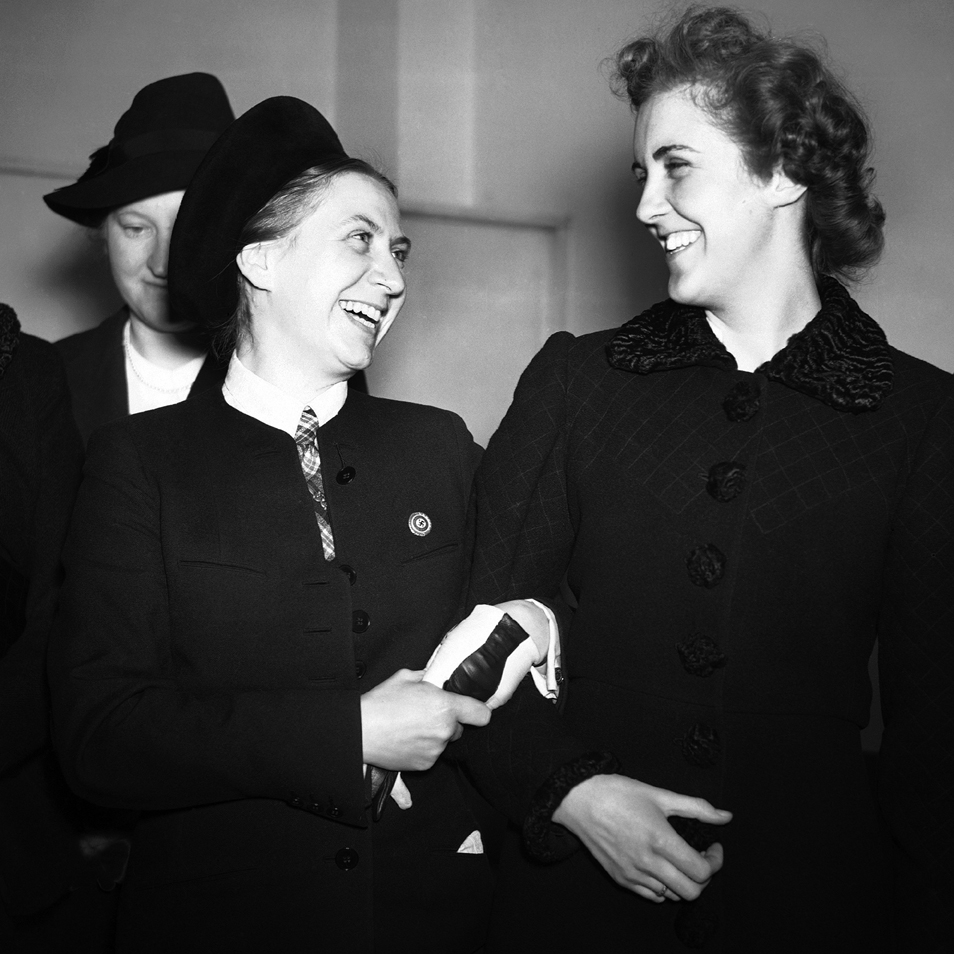'I wanted to say this to you, my women, because we often speak of our comradeship and it’s so important, that we know how powerful and beautiful it is. In this fellowship we form a chain and we take each other by the hand. It may happen occasionally, that one or the another comrade becomes weary and discouraged, that he grumbles and complains – that is to be expected – but what this person may not do, and what can not be allowed to happen, is that, his moment of despair and discouragement cause him to give up. Around us, there must a circle which will support us, and into which one can simply fall. We then say to him: “My dear friend, you’re weary today, you have grief and pain, and we can’t help you right now, because there are things that we can not simply take away from people. But we can do one thing; during this period we can take you into our midst until such time as, from our strength, our community, and our loyalty, after a few days, you’ll be happy and able to laugh once again, even if only through the tears.'
[Below: Postcard of Gertrud Scholtz-Klink.]
[Below: Gertrud Scholtz-Klink.]
[Below: Postcard of Gertrud Scholtz-Klink.]
[Below: Gertrud Scholtz-Klink.]
[Below: Postcard of Gertrud Scholtz-Klink.]
[Below: Autographed version of the postcard above.]
[Below: Calendar with the image of Gertrud Scholtz-Klink.]
[Below: Gertrud Scholtz-Klink. Circa 1934/1940. Courtesy of the Bundesarchiv.]
[Below: Gertrud Scholtz-Klink on a visit to London. Circa 1936.]
[Below: Gertrud Scholtz-Klink.]
[Below: Gertrud Scholtz-Klink.]
[Below: Postcard of Gertrud Scholtz-Klink and Maria Burgstaller.]
[Below: Gertrud Scholtz-Klink.]
[Below: Newspaper picture of Gertrud Scholtz-Klink. Circa 1939.]
[Below: Gertrud Scholtz-Klink on the cover of N.S. Frauen-Warte, 1934.]
[Below: Gertrud Scholtz-Klink.]
[Below: Gertrud Scholtz-Klink.]
[Below: Gertrud Scholtz-Klink.]
[Below: Gertrud Scholtz-Klink.]
[Below: Gertrud Scholtz-Klink, left front.]
[Below: Gertrud Scholtz-Klink.]
[Below: Gertrud Scholtz-Klink.]
[Below: Gertrud Scholtz-Klink with Heinrich Himmler. Circa August/September 1943. Courtesy of the Bundesarchiv.]
[Below: Gertrud Scholtz-Klink (left) at a Hitler Youth rally on February 13, 1939 alongside Heinrich Himmler, Rudolf Hess and Balder von Schirach.]
[Below: Gertrud Scholtz-Klink.]
[Below: Gertrud Scholtz-Klink with SS and party officials.]
[Below: Postcard of Adolf Hitler with Gertrud Scholtz-Klink. Rudolf Hess is standing in the background.]
[Below: Adolf Hitler with Gertrud Scholtz-Klink. Rudolf Hess is standing in the background, with Martin Bormann behind him (far left).]
[Below: Adolf Hitler with Gertrud Scholtz-Klink at the 1936 Nuremberg Rally. Photo by Heinrich Hoffmann.]
[Below: Gertrud Scholtz-Klink.]
[Below: Gertrud Scholtz-Klink.]
[Below: International women's meeting in Berlin of thirteen nations. From left to right - Norway's Frau Olga Bjoner (Landesleiterin d. Norwegischen NS-Frauenorganisation), Germany's Frau Scholtz-Klink (Reichsfrauenführerin), Japan's Frau Oshima (wife of the Japanese Ambassador Hiroshi Oshima), Spain's Pilar Primo de Rivera (Frauenführerin, founder of the women's Falange section and sister of martyr José Antonio Primo de Rivera) and Italy's Marchesa Olga Medici. October 7, 1941. Courtesy of the Bundesarchiv.]
[Below: Gertrud Scholtz-Klink.]
[Below: Gertrud Scholtz-Klink.]
[Below: Gertrud Scholtz-Klink being immortalized in stone by Ernst Paul Hinckeldey.]
[Below: Ernst Paul Hinckeldey also designed and made this famous Horst Wessel statue in 1939, which was melted down to help the war effort in 1945.]
[Below: The Ernst Paul Hinckeldey Horst Wessel statue honored by the party.]
[Below: Gertrud Scholtz-Klink.]
[Below: Gertrud Scholtz-Klink and Ann Prunella Stack .]
[Below: Gertrud Scholtz-Klink and Ann Prunella Stack (middle), who was the head of a British organization called 'Women's League of Health and Beauty'.]
[Below: Gertrud Scholtz-Klink and Ann Prunella Stack, March 8, 1939. Click to enlarge.]
[Below: Gertrud Scholtz-Klink.]
[Below: Gertrud Scholtz-Klink.]
[Below: Gertrud Scholtz-Klink.]
[Below: Gertrud Scholtz-Klink.]
[Below: Gertrud Scholtz-Klink.]
[Below: Gertrud Scholtz-Klink.]
[Below: Gertrud Scholtz-Klink.]
[Below: Gertrud Scholtz-Klink (first row, five from right).]
[Below: Gertrud Scholtz-Klink (white dress). Courtesy of BPK.]
[Below: Gertrud Scholtz-Klink sitting next to Robert Ley.]
[Below: Gertrud Scholtz-Klink.]
[Below: Gertrud Scholtz-Klink.]
[Below: Gertrud Scholtz-Klink on an official visit to Norway.]
[Below: Gertrud Scholtz-Klink on an official visit to Norway.]
[Below: Gertrud Scholtz-Klink on an official visit to Norway.]
[Below: Gertrud Scholtz-Klink on an official visit to Norway.]
[Below: Gertrud Scholtz-Klink on an official visit to Norway.]
[Below: Gertrud Scholtz-Klink on an official visit to Norway.]
[Below: Gertrud Scholtz-Klink on an official visit to Norway.]
[Below: Gertrud Scholtz-Klink on an official visit to Norway.]
[Below: Gertrud Scholtz-Klink on an official visit to Norway.]
[Below: Gertrud Scholtz-Klink. Circa 1936.]
[Below: Gertrud Scholtz-Klink.]
[Below: Gertrud Scholtz-Klink.]
[Below: Gertrud Scholtz-Klink.]
[Below: Gertrud Scholtz-Klink, with the great Rudolf Hess on the right.]
[Below: Gertrud Scholtz-Klink, next to her is Martin Bormann, Rudolf Hess, Robert Ley and Alfred Rosenberg.]
[Below: Gertrud Scholtz-Klink. Circa 1941.]
[Below: Gertrud Scholtz-Klink.]
[Below: Gertrud Scholtz-Klink, October 21, 1941, welcomed by the people of Luxemburg upon her arrival. Gauleiter Gustav Simon had given a speech before a massive crowd of women in the exhibition hall of the city of Luxembourg. The women of Luxembourg showed such massive interest that the huge hall was closed prematurely due to overcrowding. Nonetheless many women listened intently outside of the hall. Courtesy of the Bundesarchiv.]
[Below: Gertrud Scholtz-Klink.]
[Below: Gertrud Scholtz-Klink.]
[Below: Gertrud Scholtz-Klink at a Party Rally in 1938, talking to the Women's League.]
[Below: Gertrud Scholtz-Klink at podium]
[Below: Klink with her husband SS General August Heissmeyer and their family]
[Below: Variation.]
[Below: Klink (far right) with Adolf Hitler, Rudolf Hess, Heinrich Himmler, Joseph Goebbels, Martin Bormann and others attend the 'Frauenschaftstagung' (female community meeting) in the Congress Hall.]
[Above: NS-Frauenschaft leader Gertrud Scholtz-Klink with comrades.]
[Above: Gertrud Scholtz-Klink with Robert Ley and Hanna Reitsch.]
[Above: Gertrud Scholtz-Klink with others.]
[Above: Gertrud Scholtz-Klink and Alfred Rosenberg.]
[Above: Gertrud Scholtz-Klink.]
[Above: Gertrud Scholtz-Klink with delegates from various countries.]
[Above: Gertrud Scholtz-Klink (far left).]
[Above: Gertrud Scholtz-Klink.]
[Below: Gertrud Scholtz-Klink at podium]
[Below: Gertrud Scholtz-Klink at podium giving a speech at the Reichs Party Day, 1936]
[Below: Gertrud Scholtz-Klink at podium giving a speech at the Reichs Party Day, 1936]
[Below: Gertrud Scholtz-Klink with SS officers at the 1938 Nuremberg NSDAP rally.]
[Below: Gertrud Scholtz-Klink with SS officers at the 1938 Nuremberg Party rally.]
[Below: From the front, left to right: Wilhelm Frick, Julius Streicher; second row: Joachim von Ribbentrop, Gertrud Scholtz-Klink; unknown two men; in the back: Adolf Hühnlein, the Korpsführer of the National Socialist Motor Corps (NSKK), a position he would have until his death in 1942.]
[Below: Official portrait of Gertrud Scholtz-Klink.]
[Below: Gertrud Scholtz-Klink on the cover of Gaublatt magazine.]
[Below: Gertrud Scholtz-Klink with her husband August Heissmeyer. In Allied captivity. Circa 1948.]
[Below:
August Heissmeyer (January 11, 1897 - January 16, 1979). Heissmeyer was SS-Obergruppenführer and General of the Waffen-SS and the head of the department of the SS main office. Courtesy of the Bundesarchiv.]
'The National Socialist movement sees the man and the woman as equal bearers of Germany’s future.
-Gertrud Scholtz-Klink
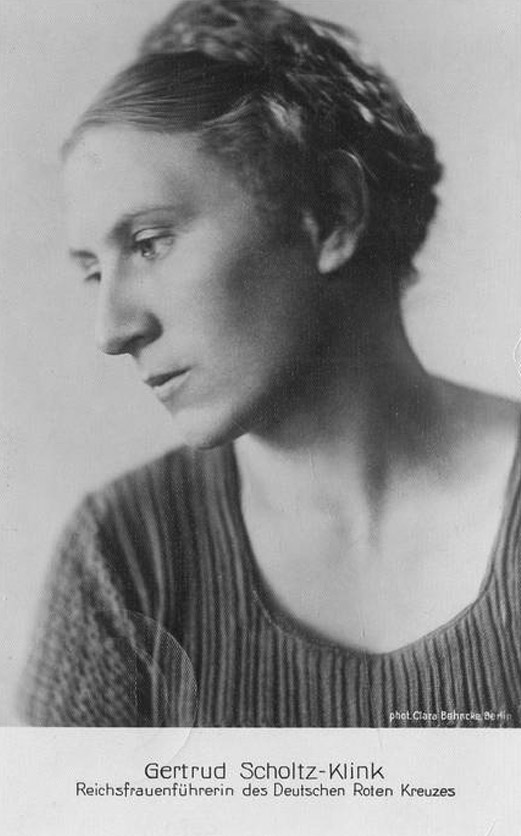
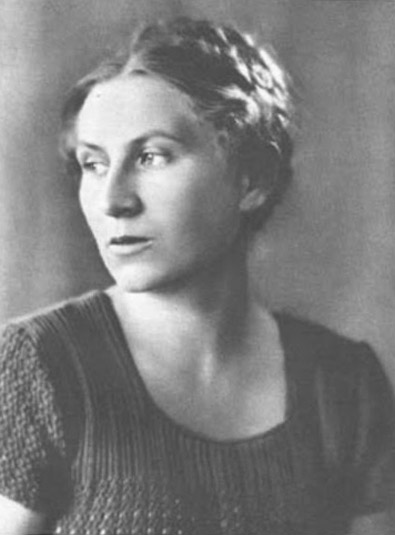
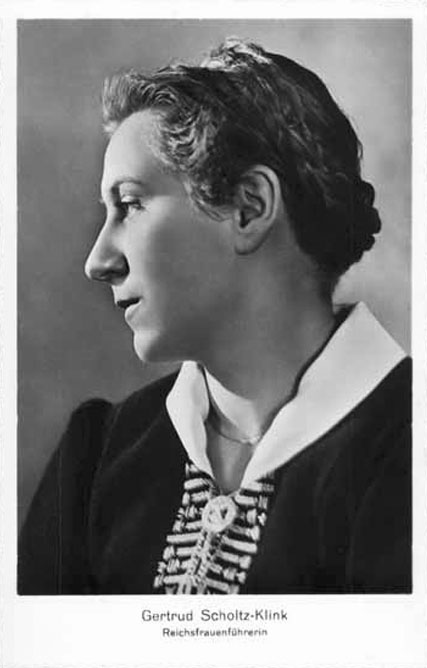
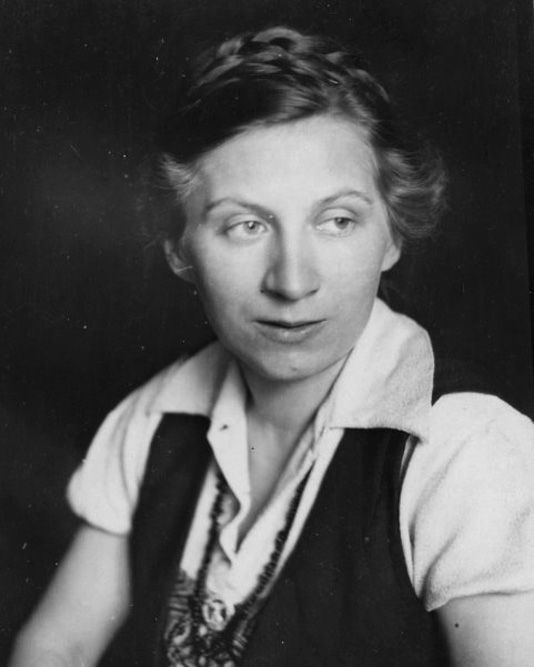
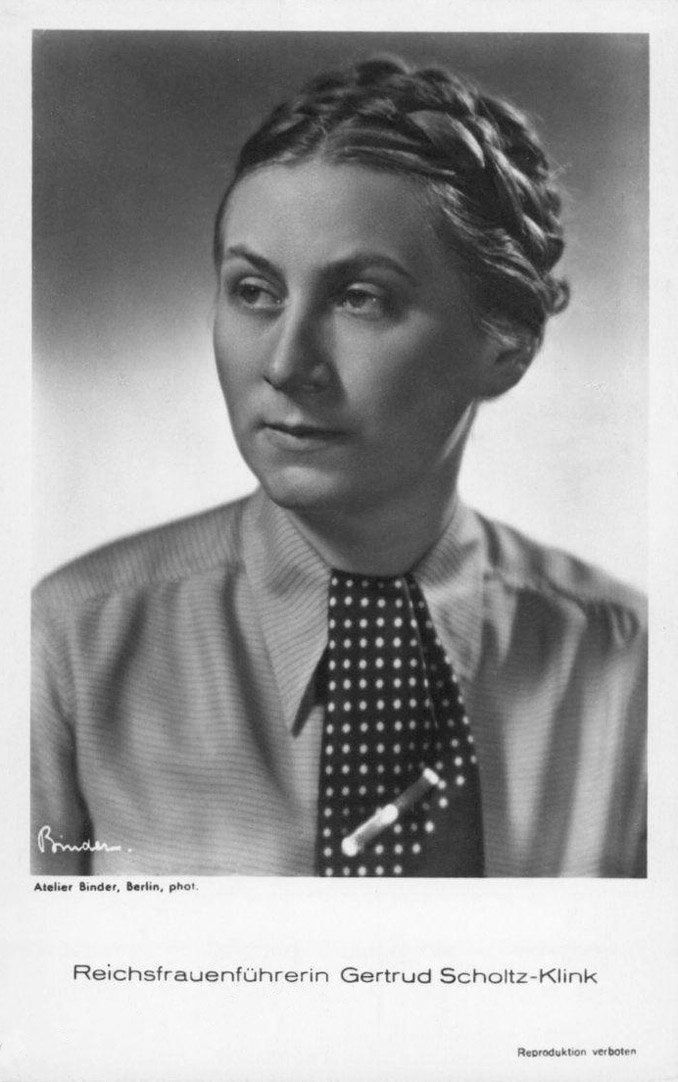
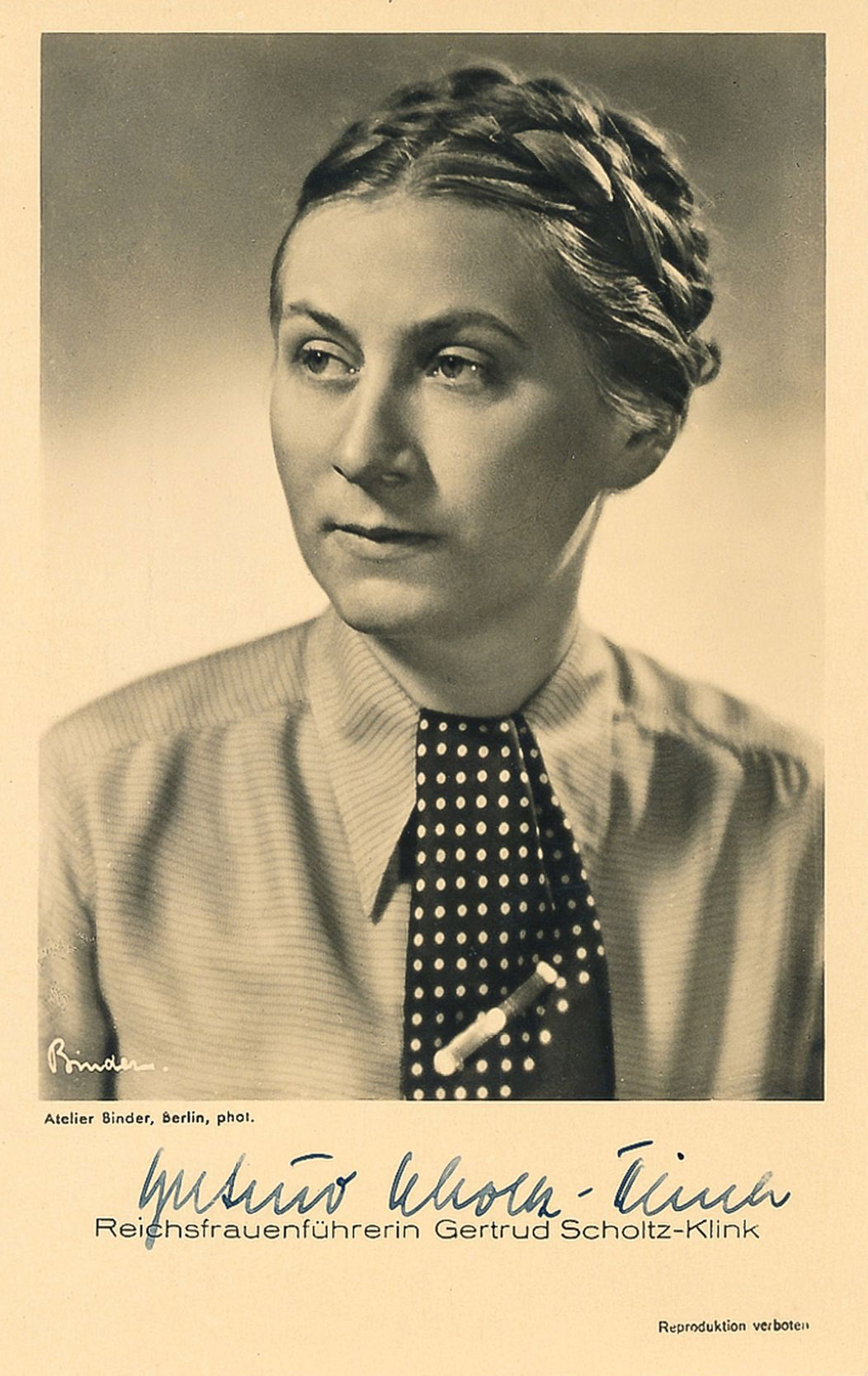
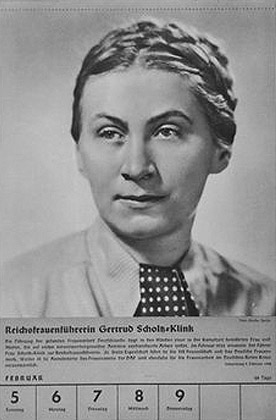
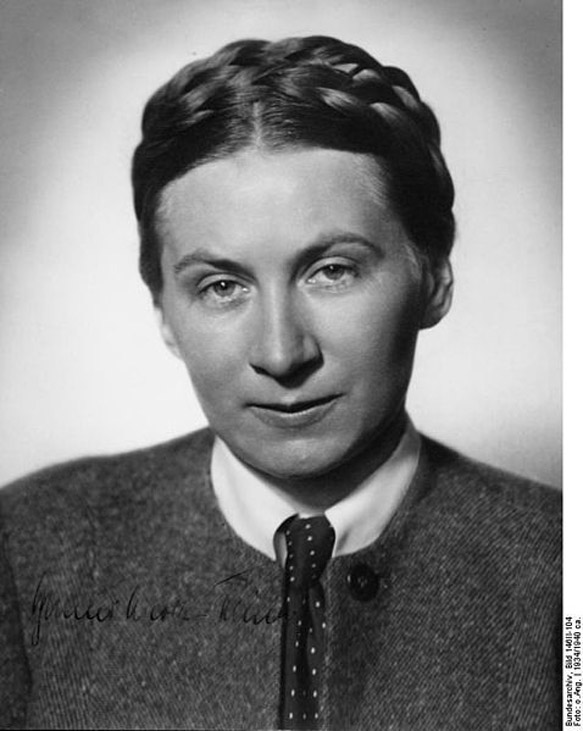
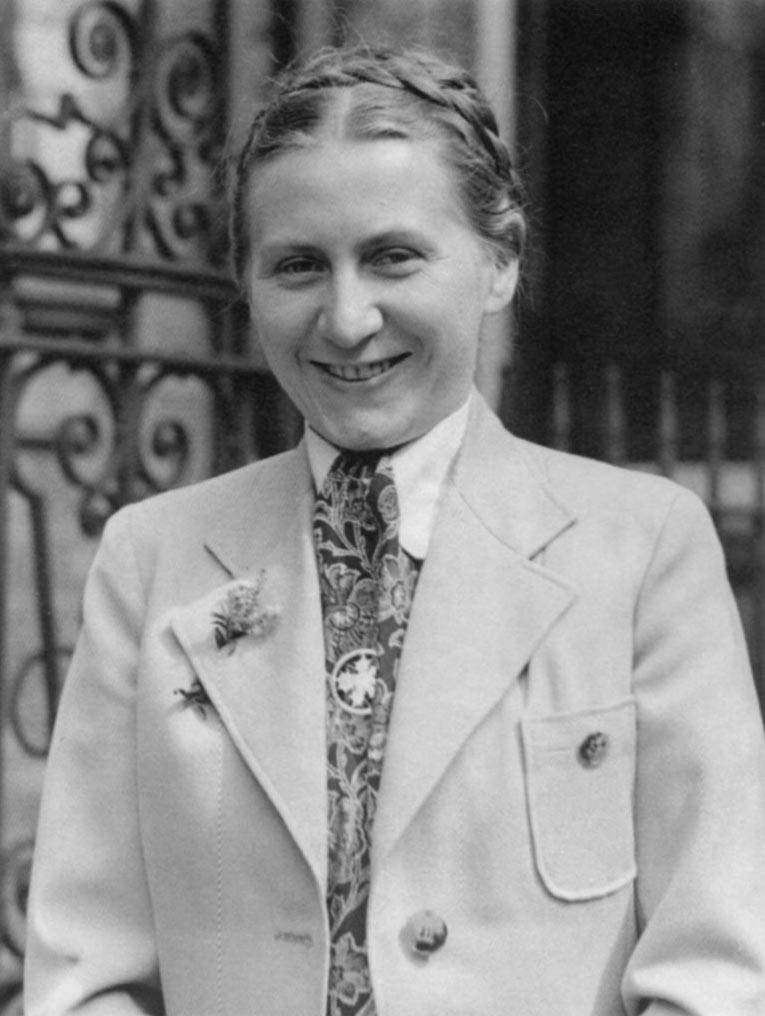
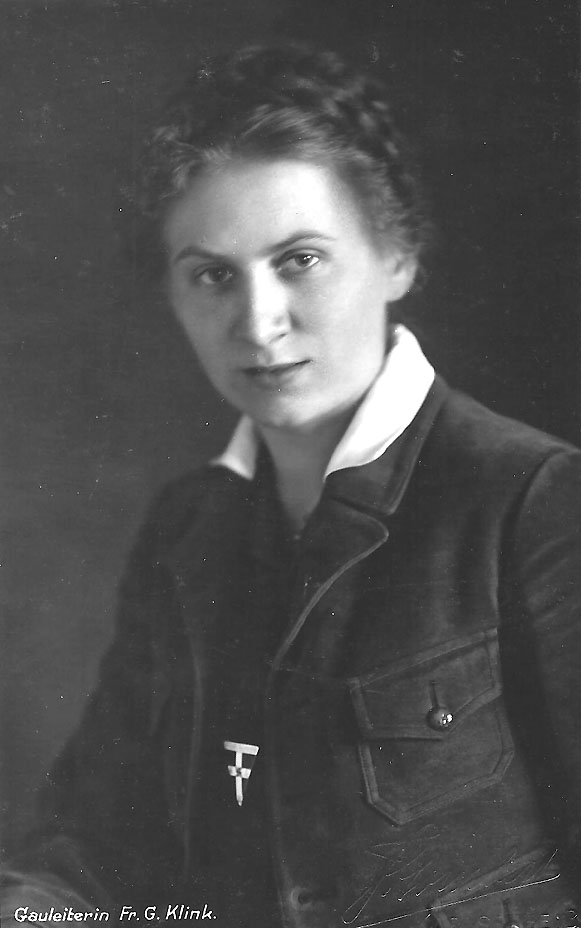
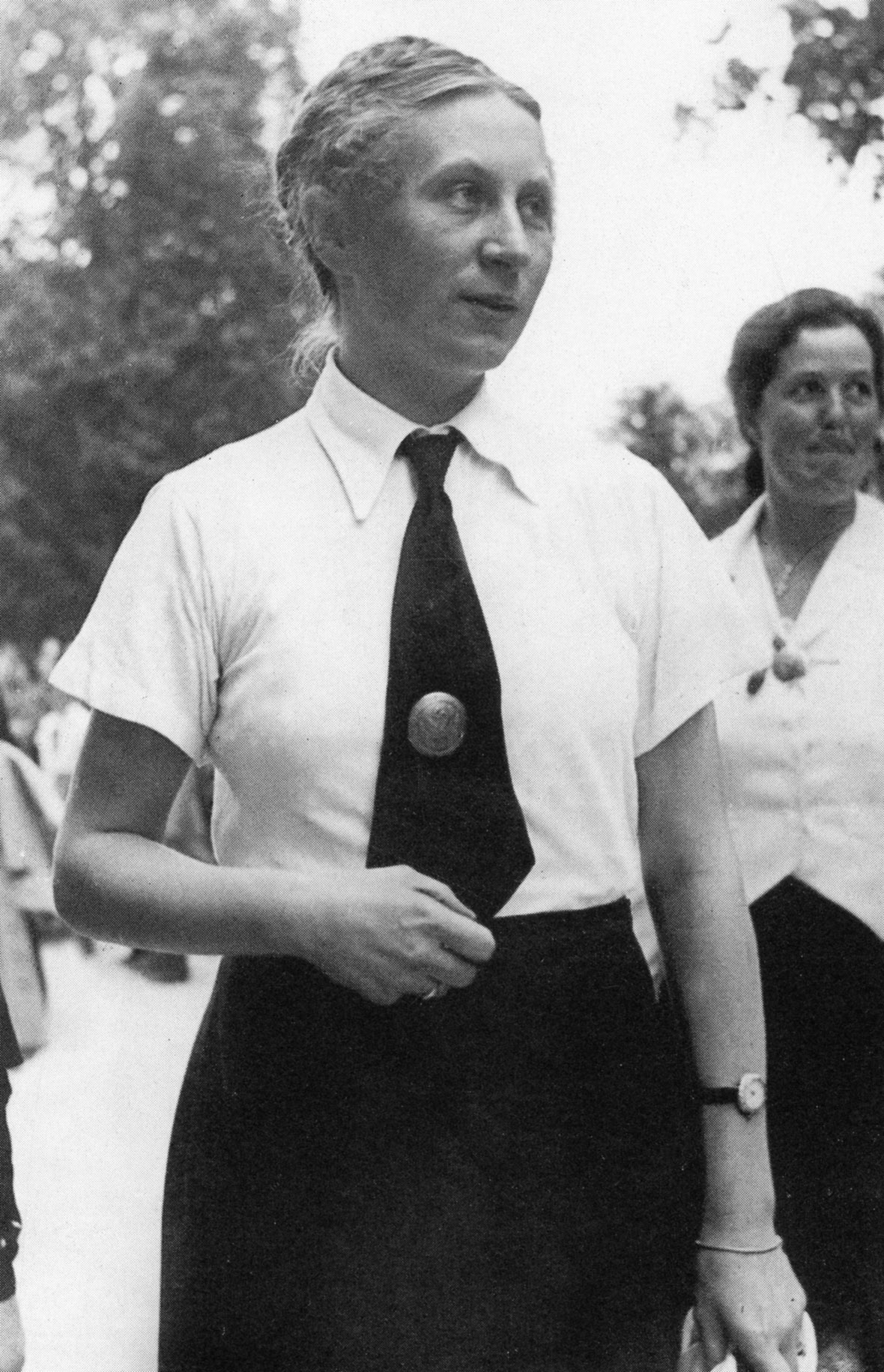
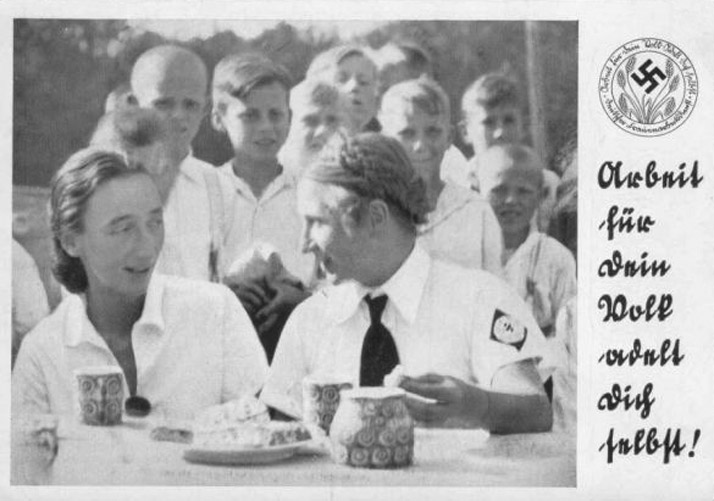
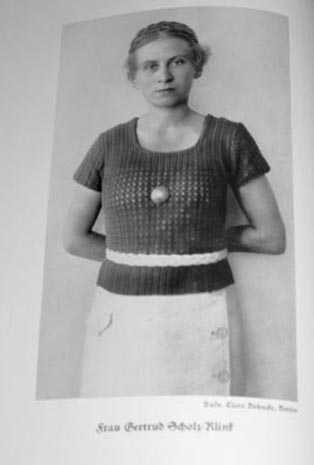
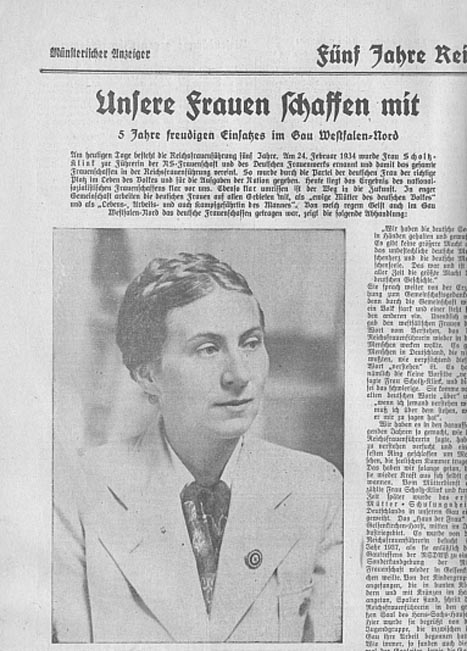
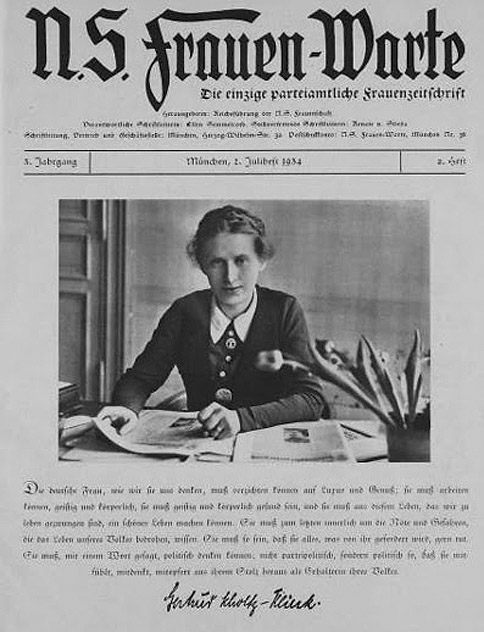
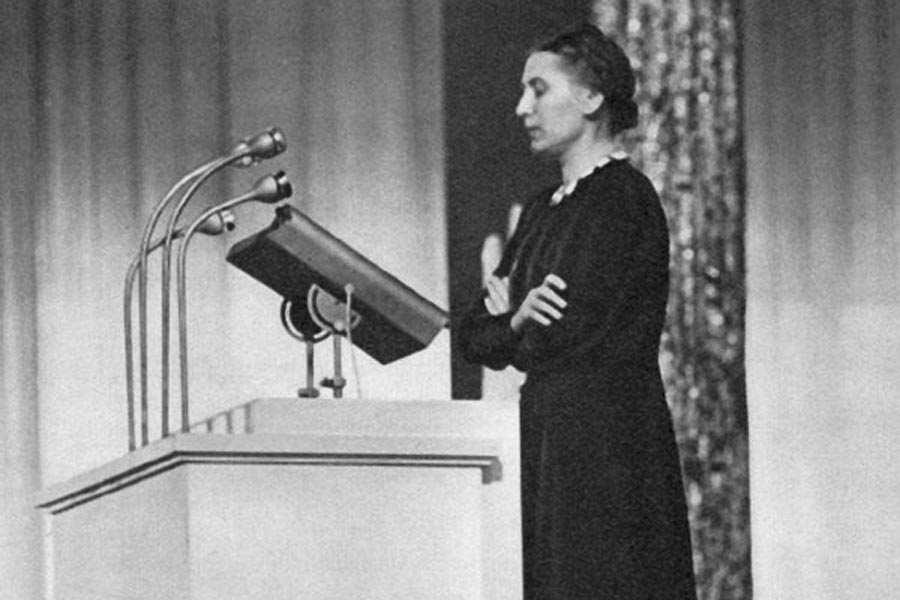
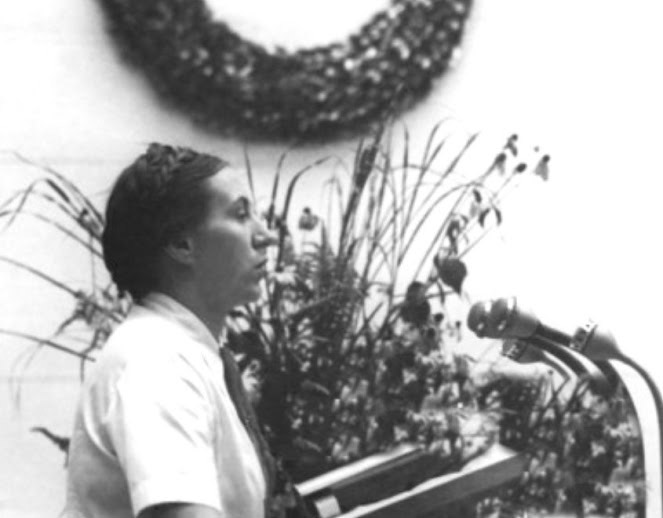
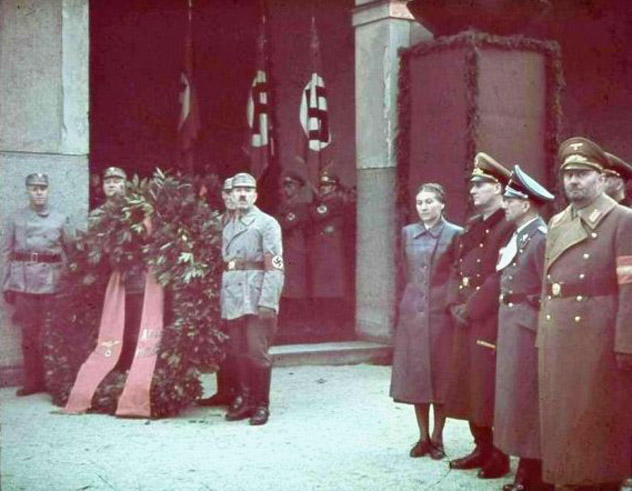
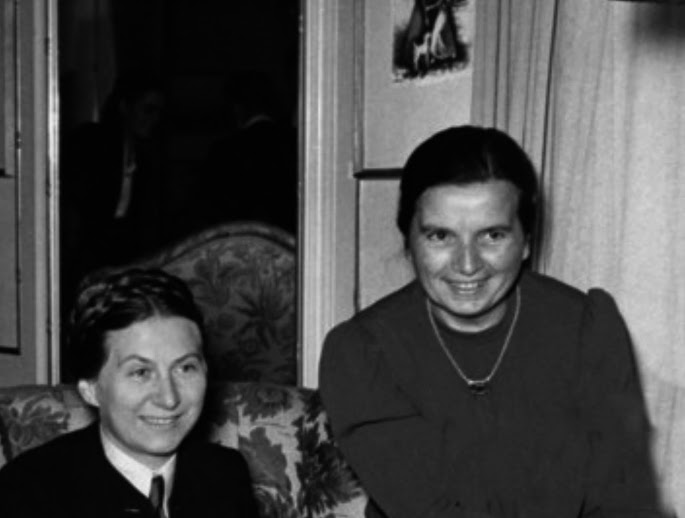
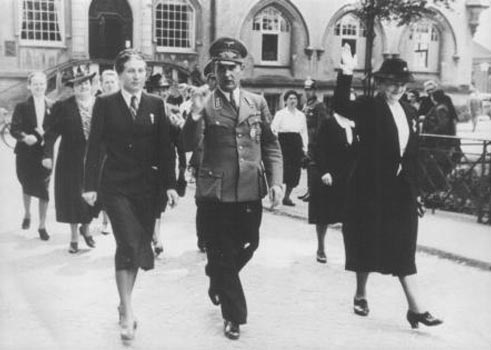
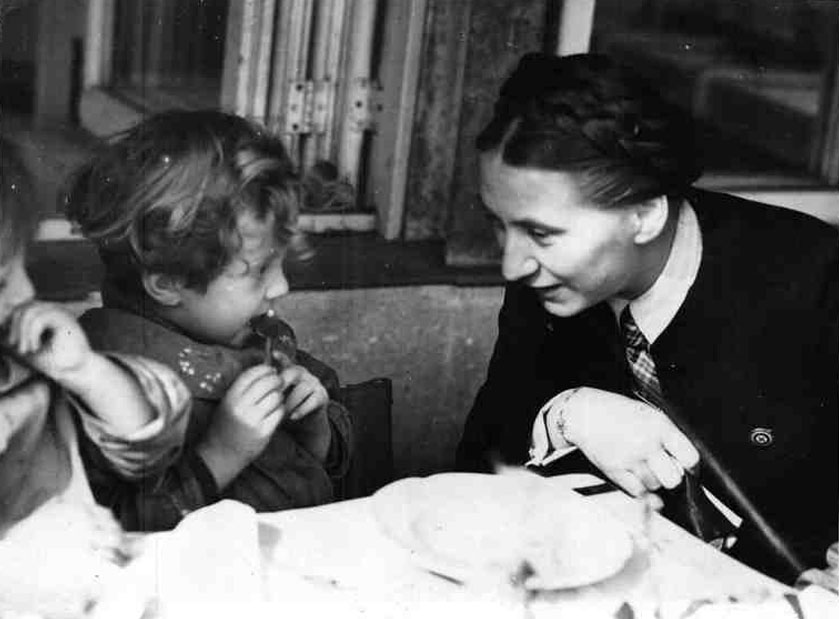
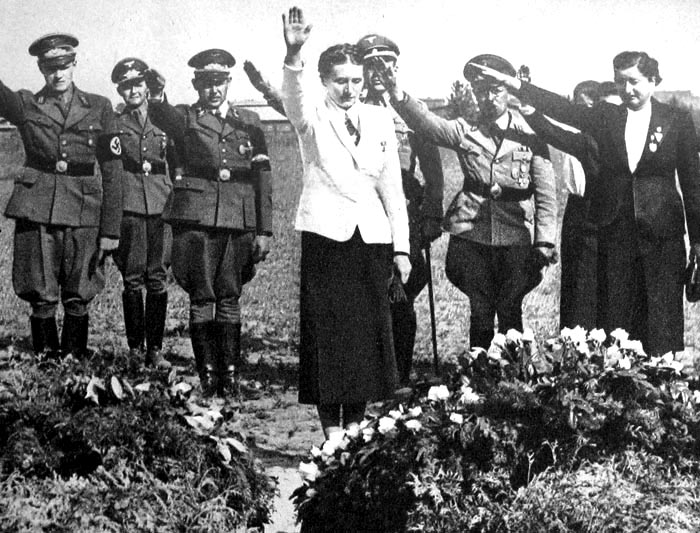
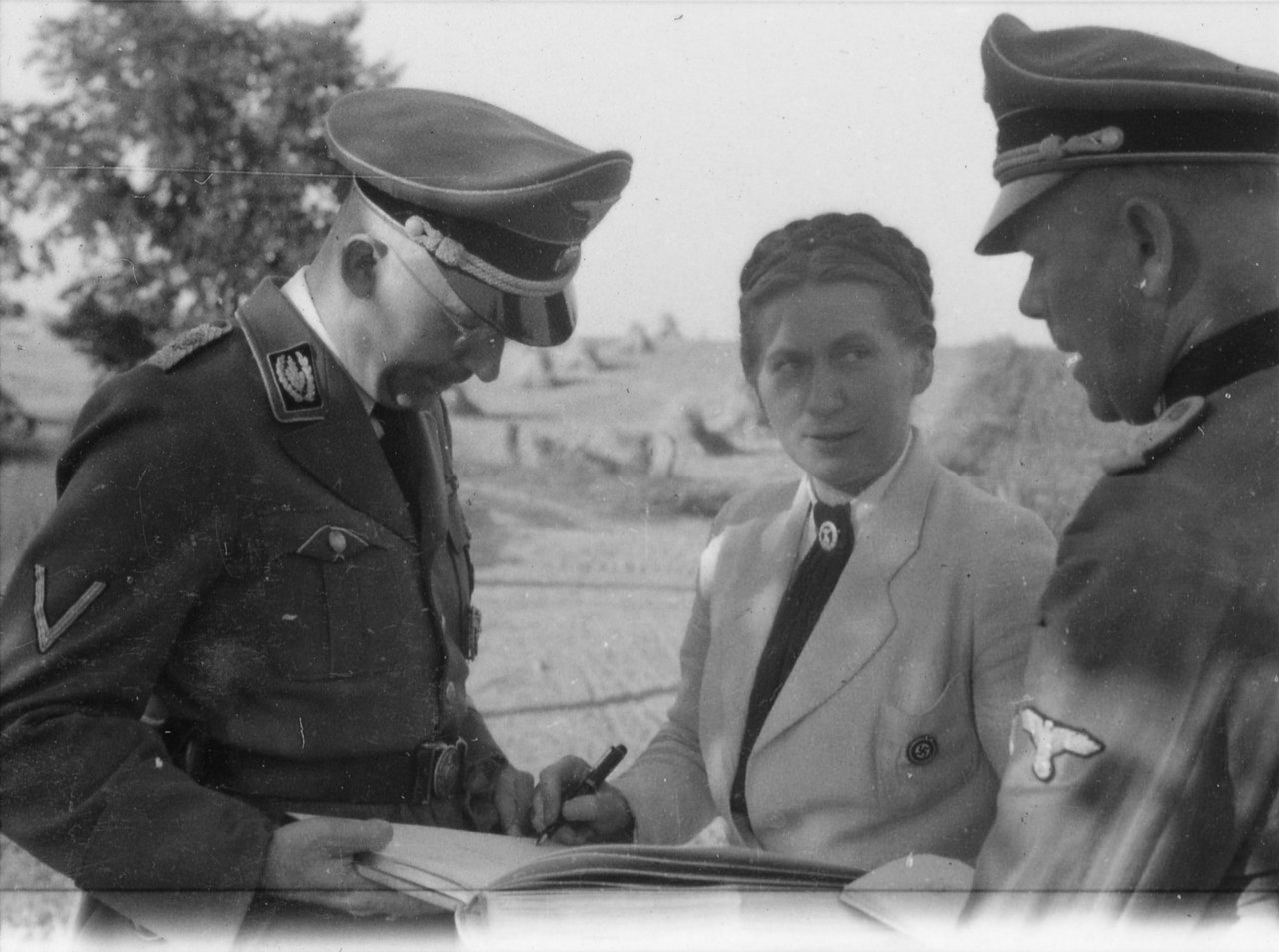
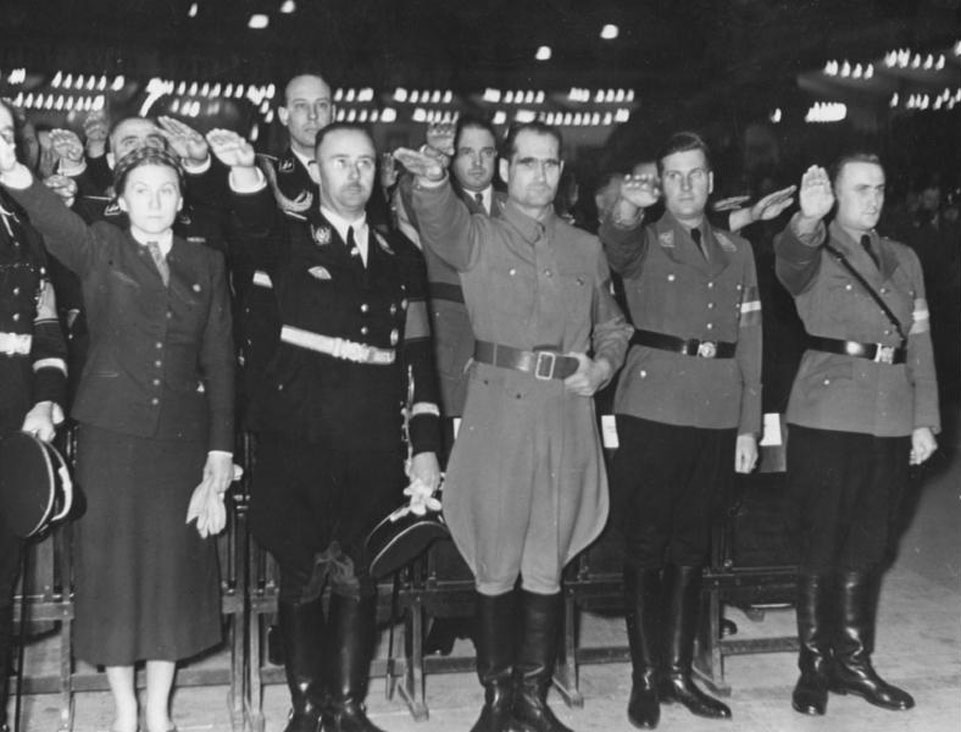
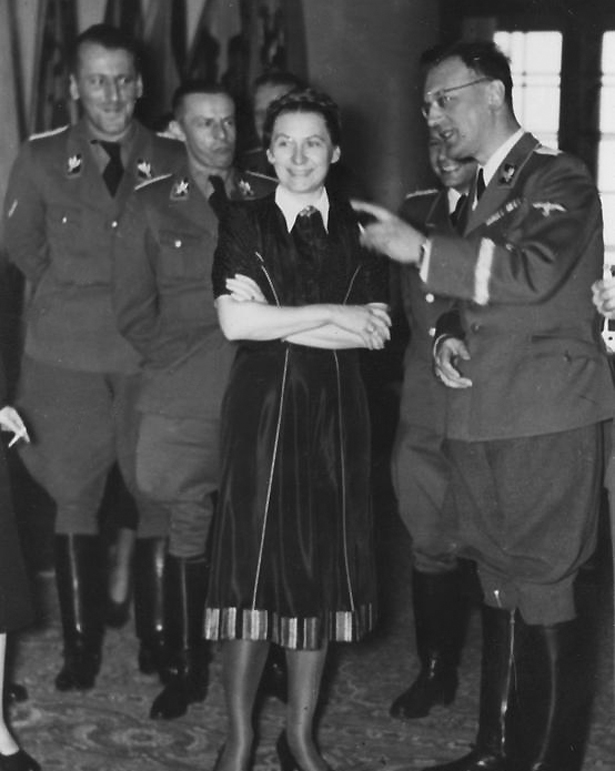
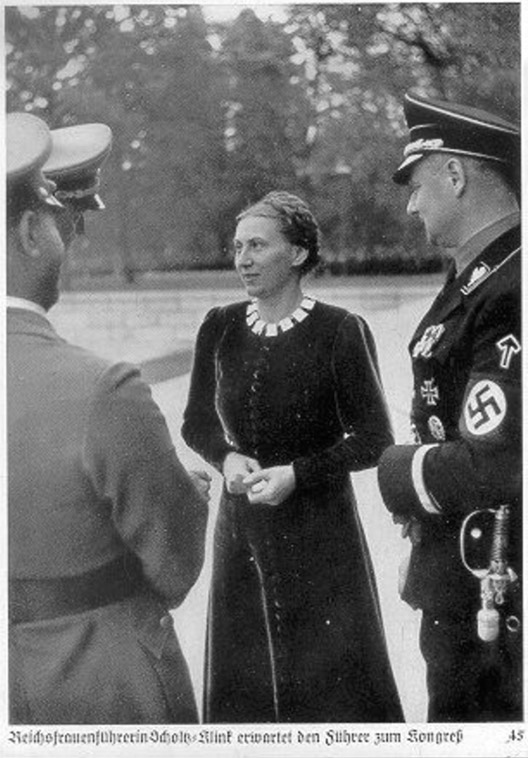
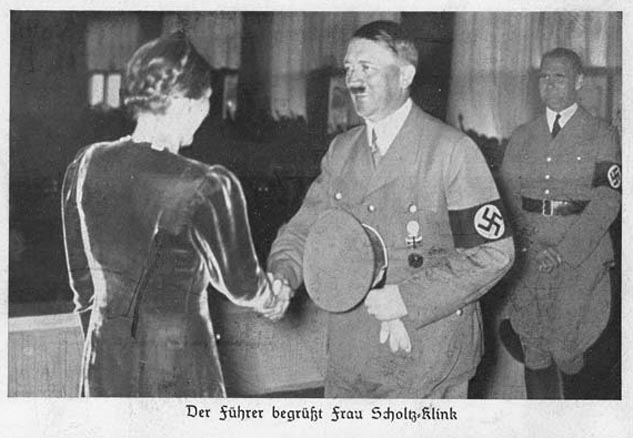
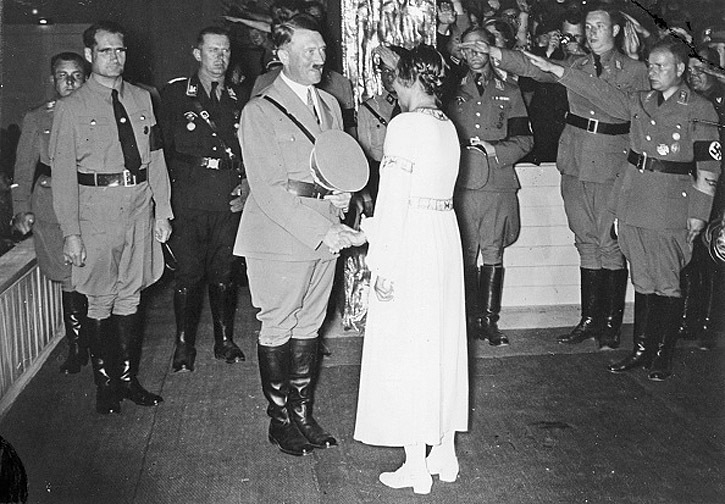
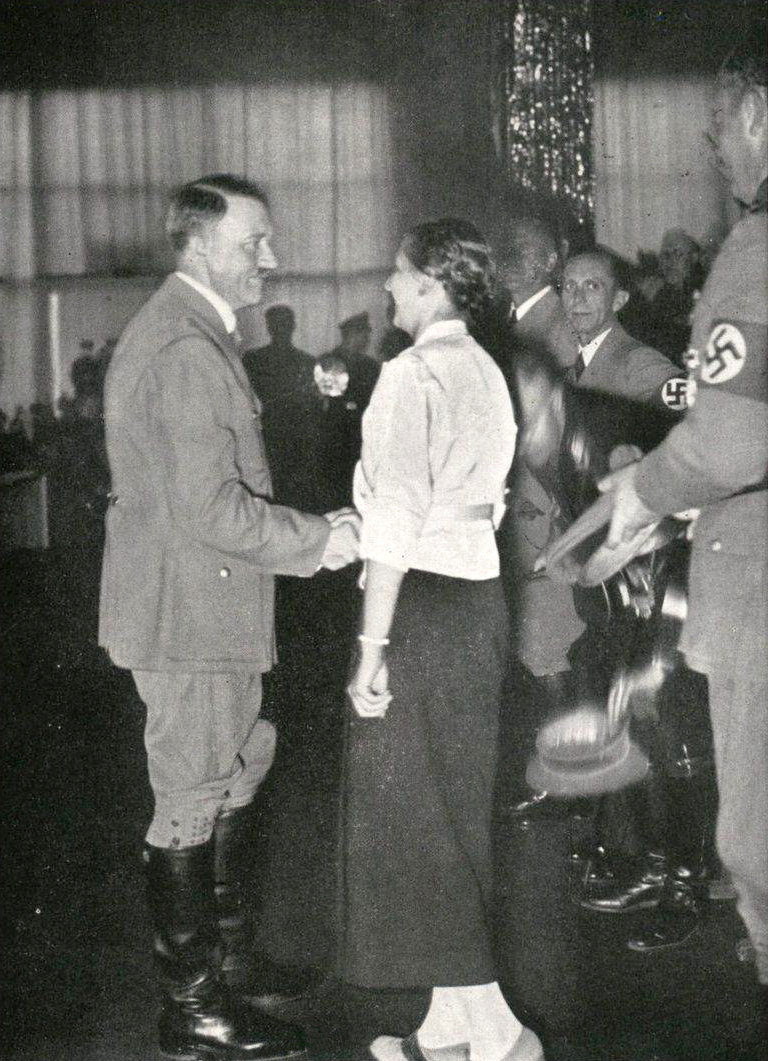
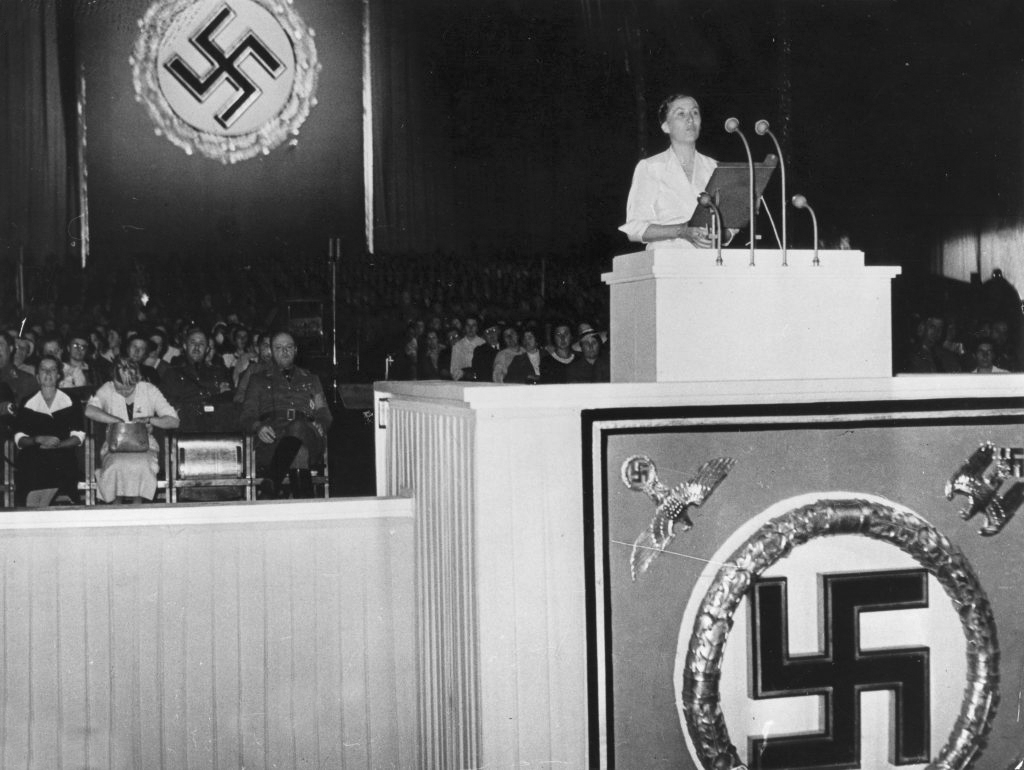
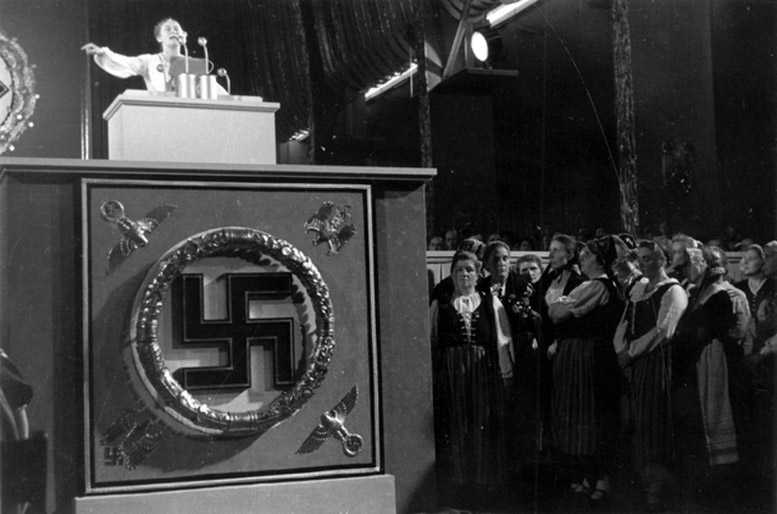
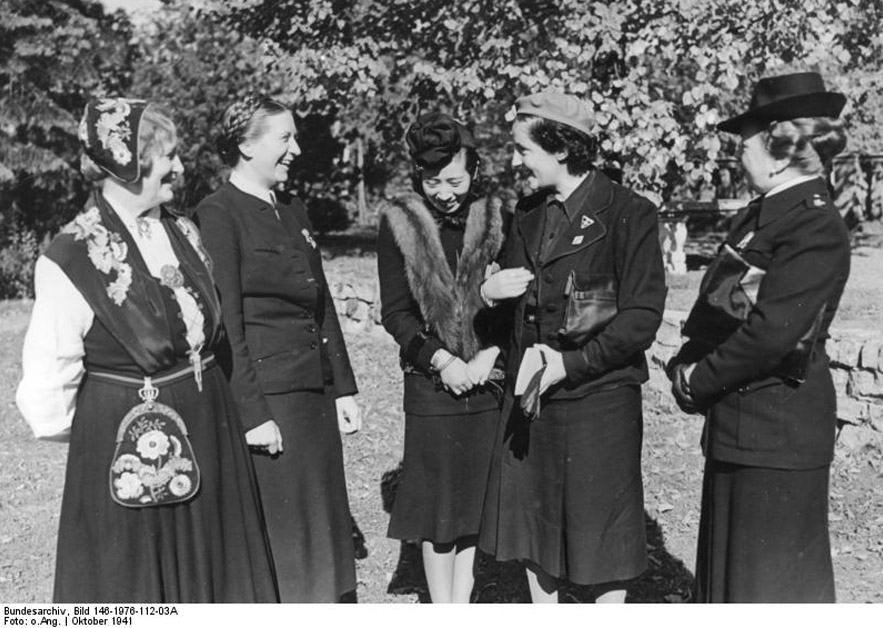
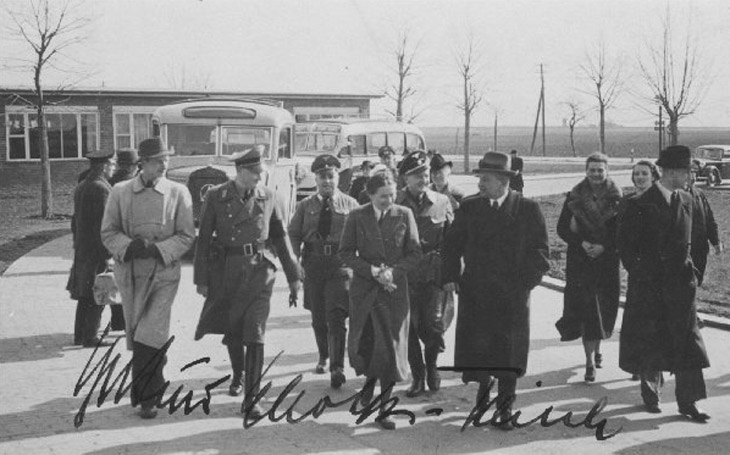
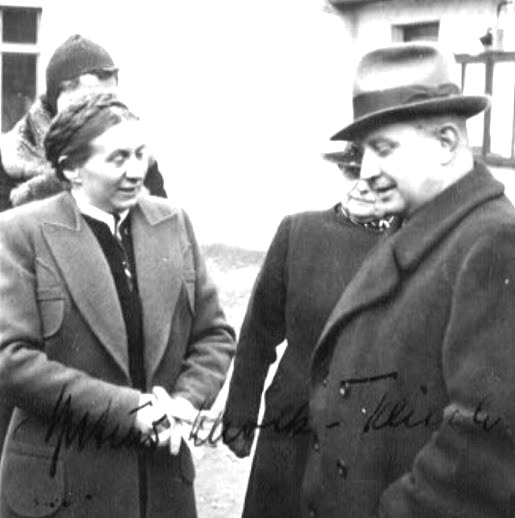
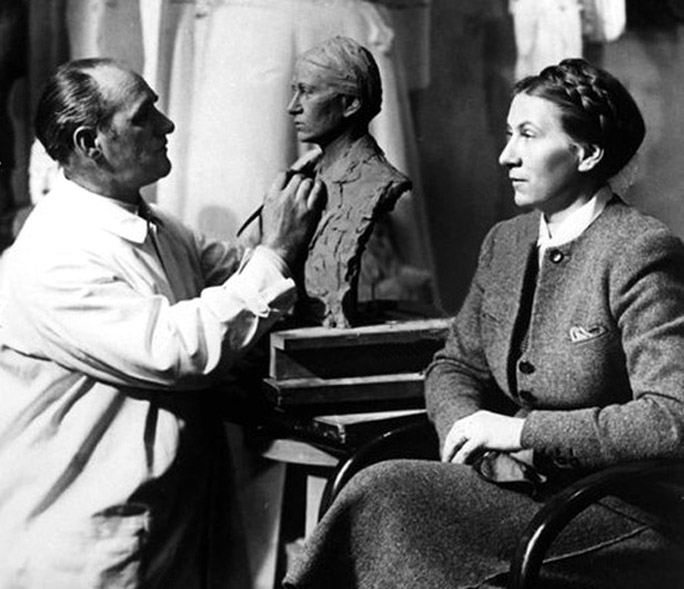
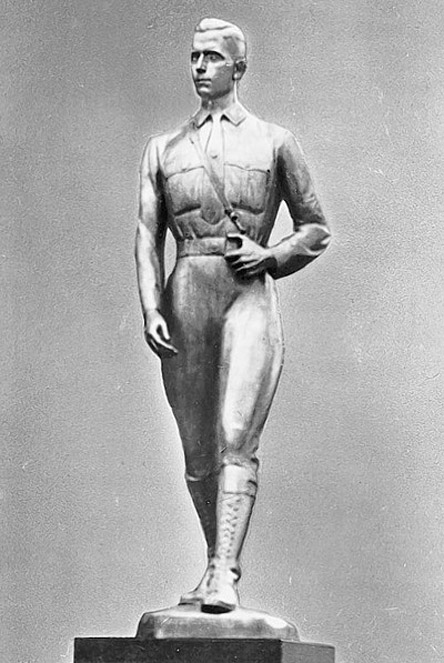
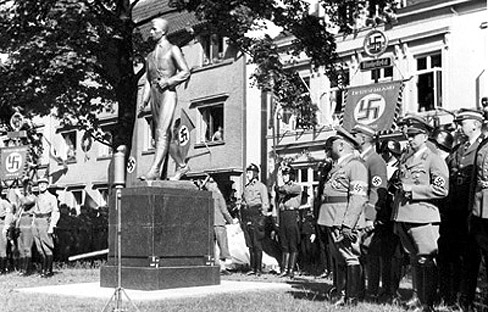
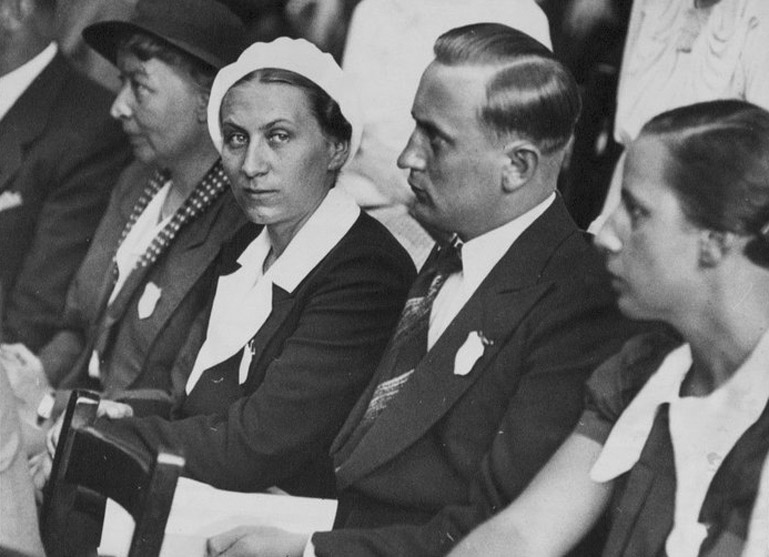
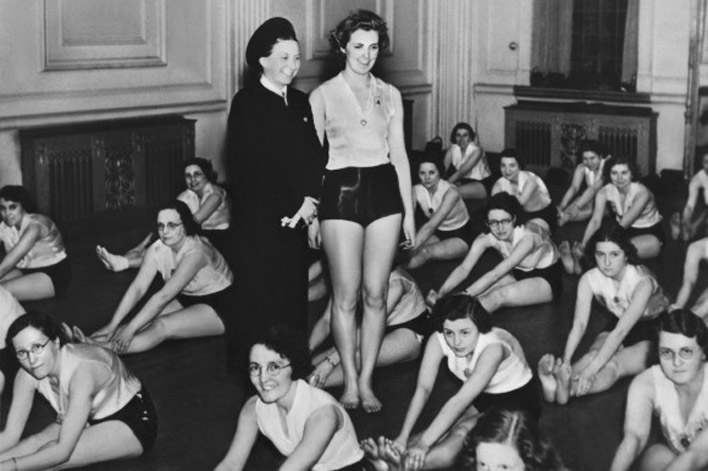
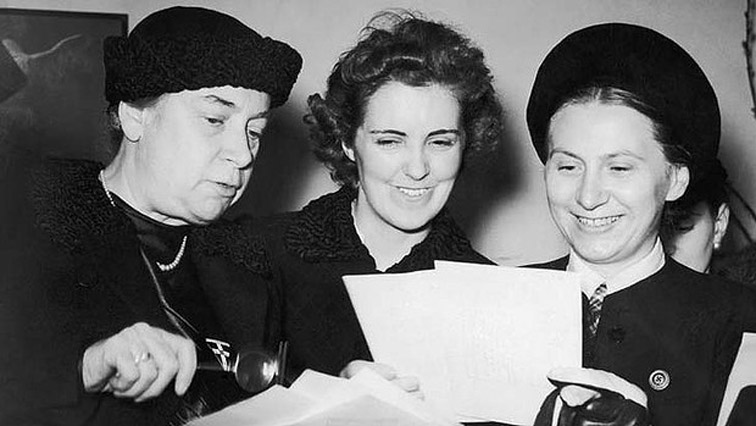
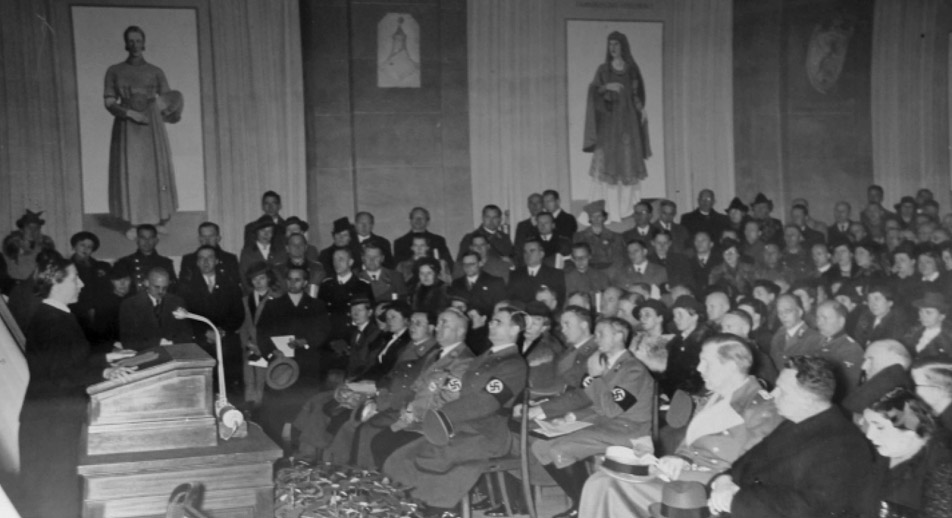
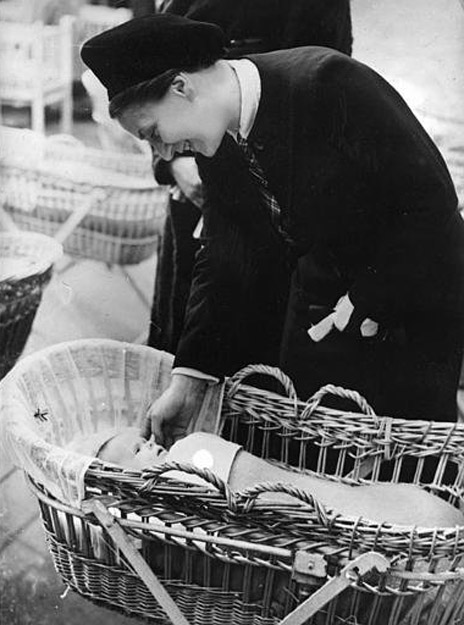
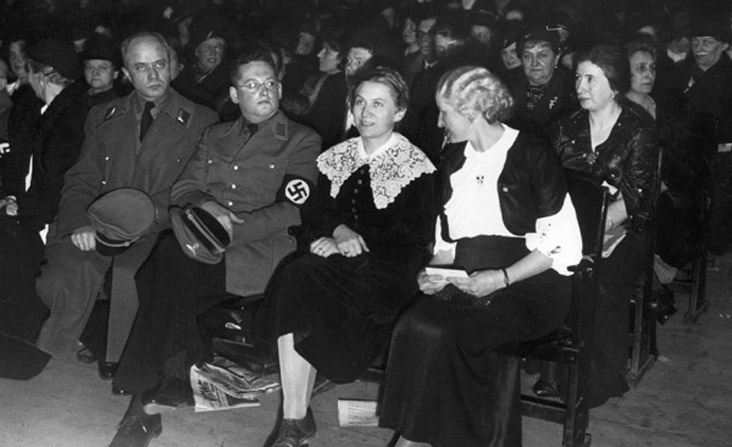
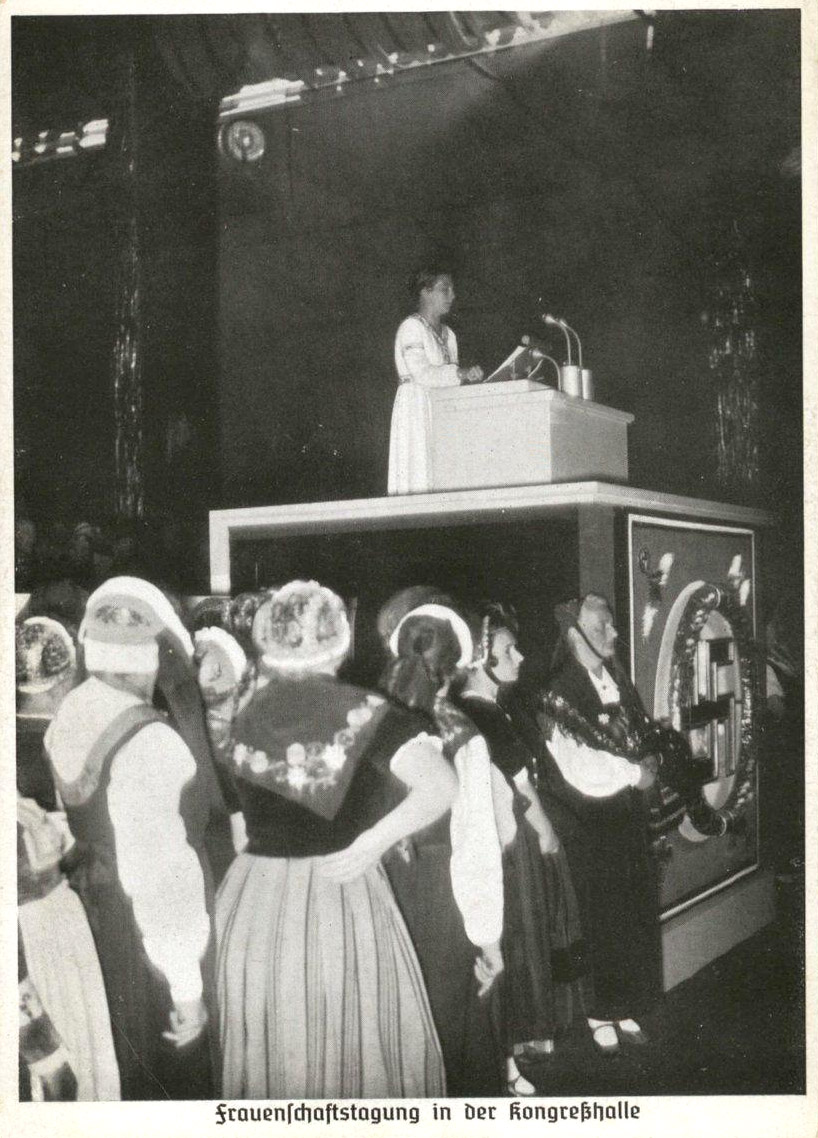
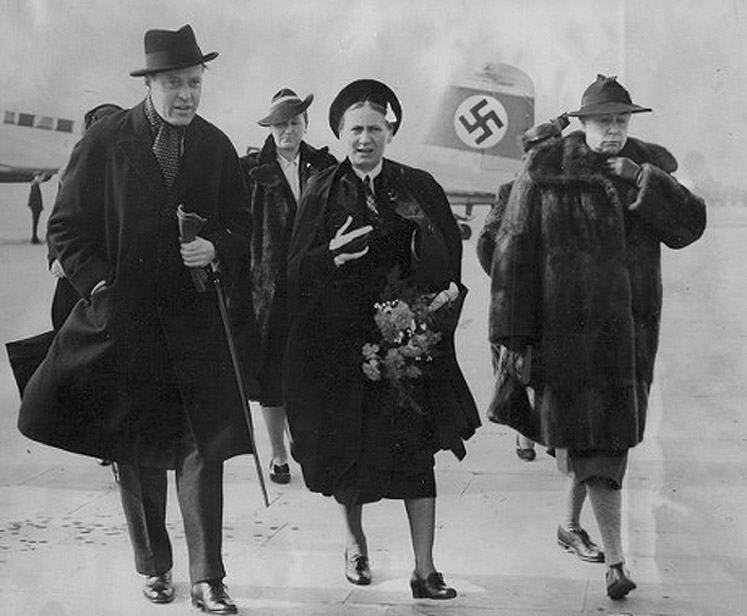
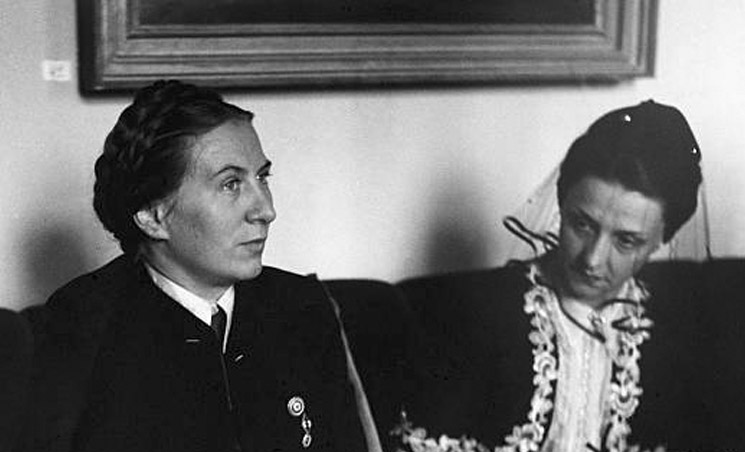
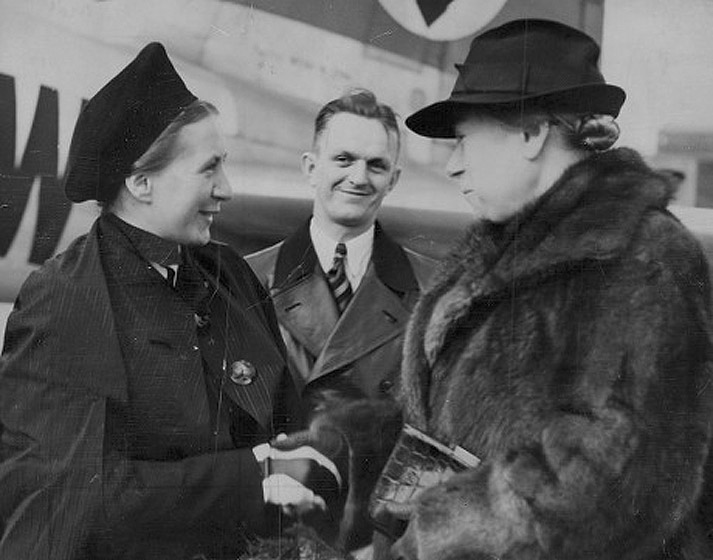
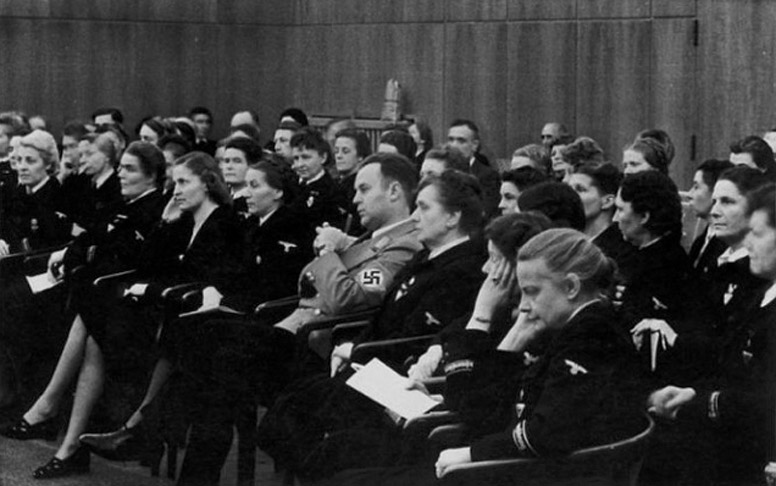
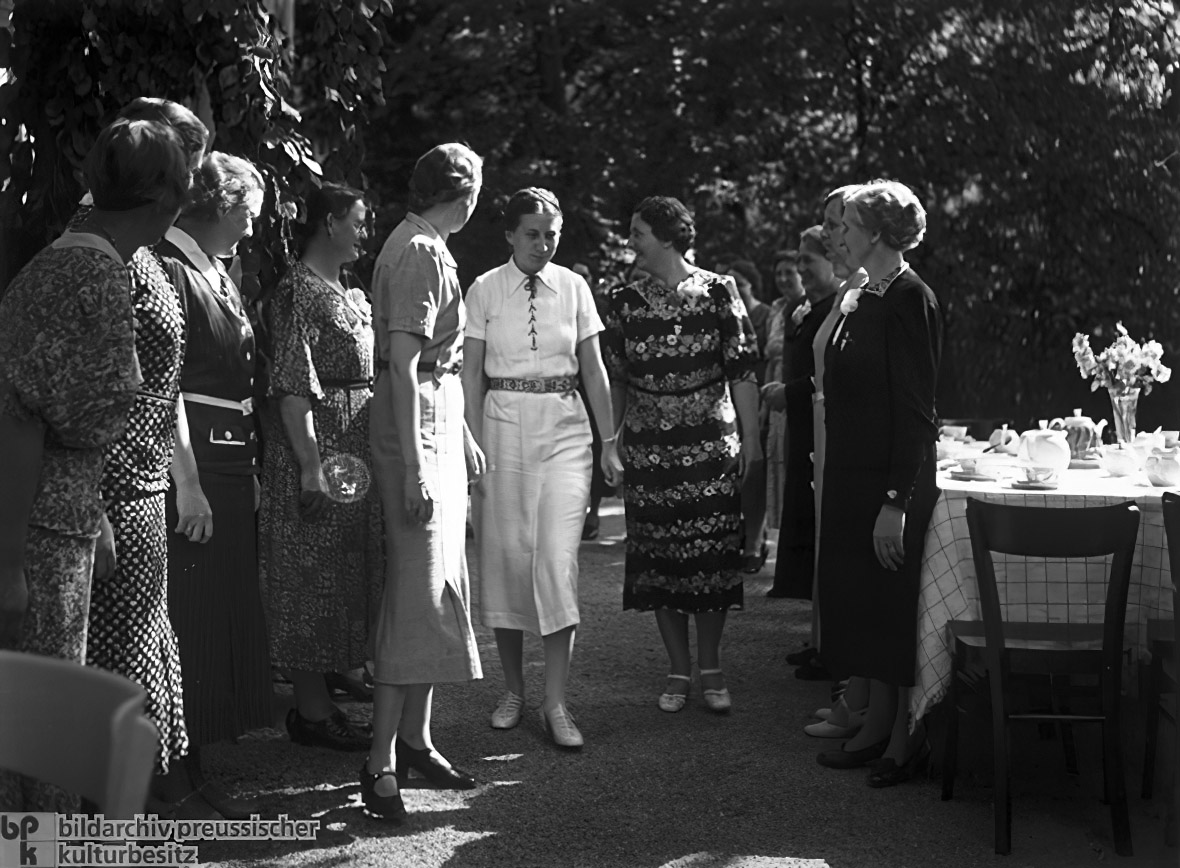
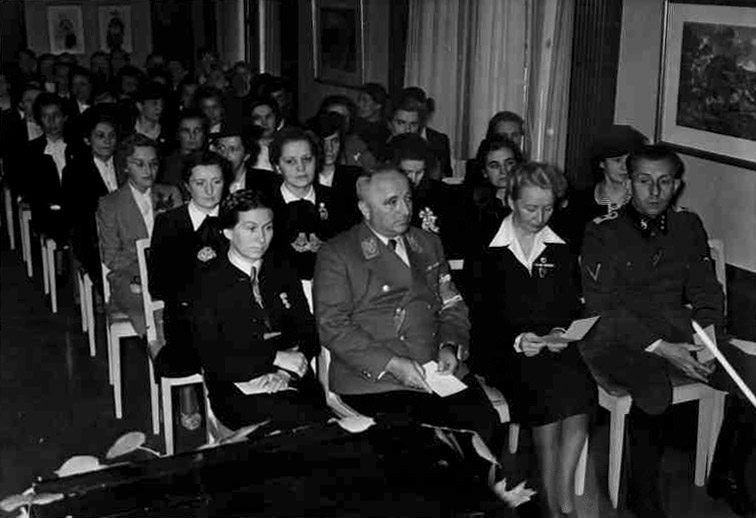
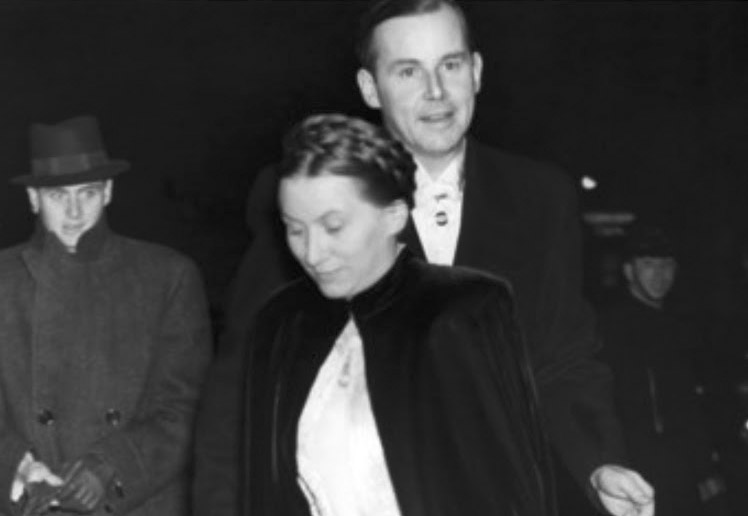
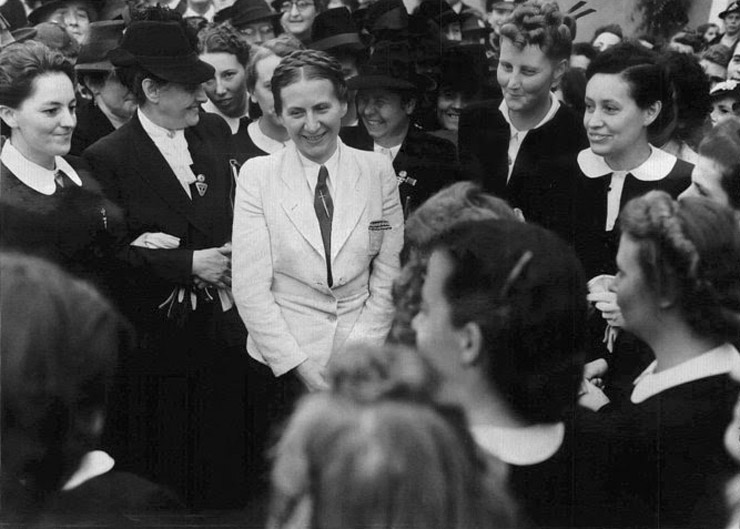
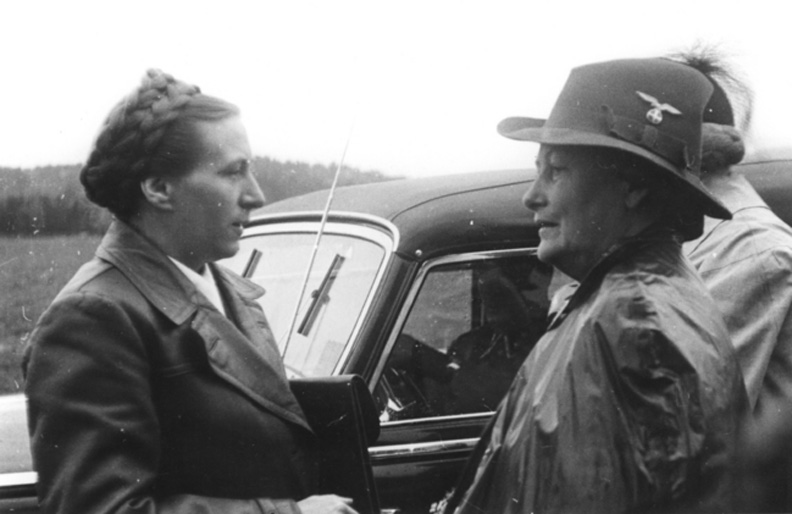
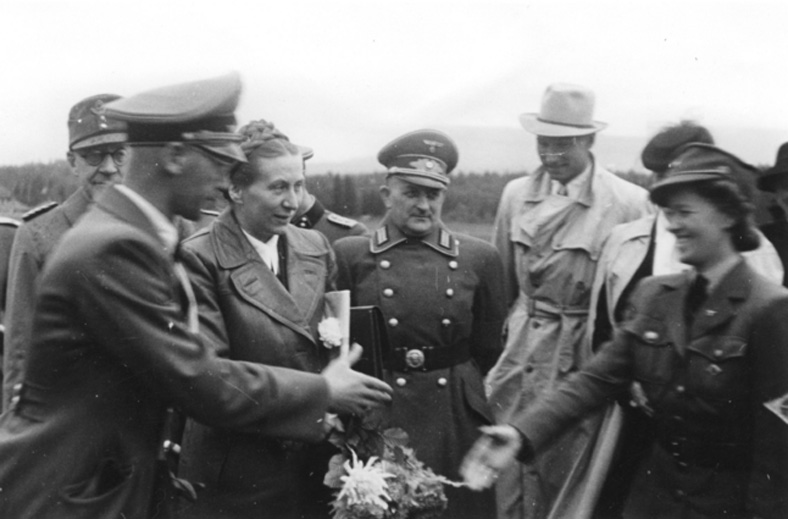
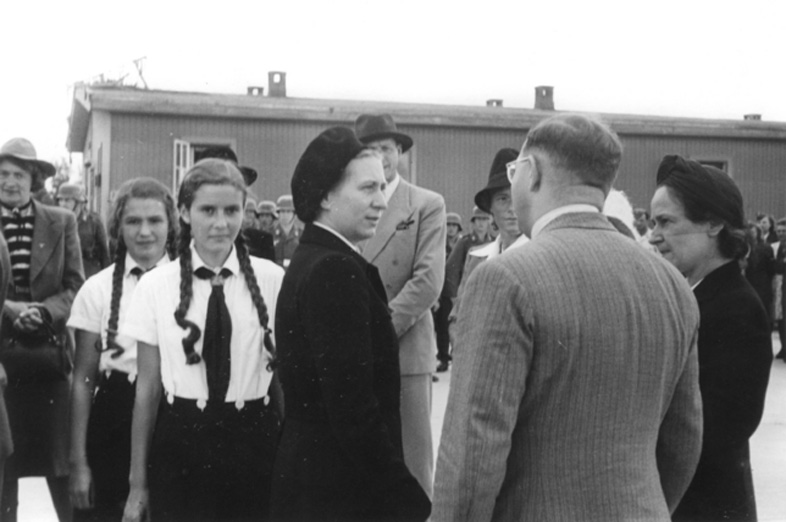
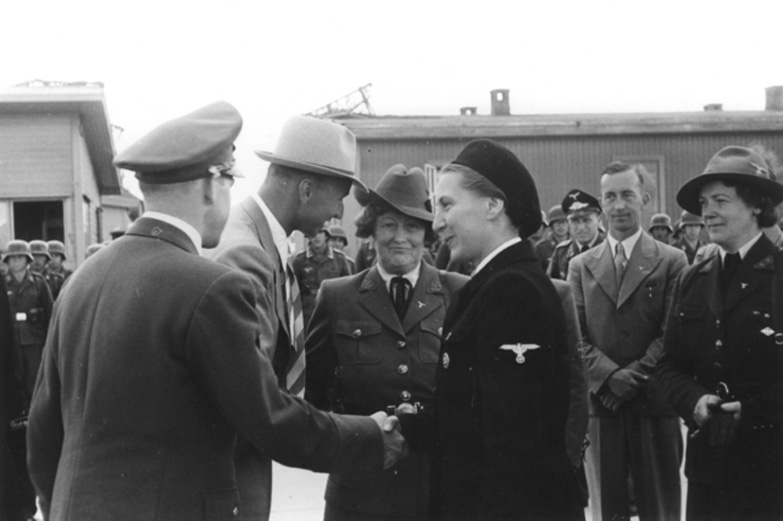
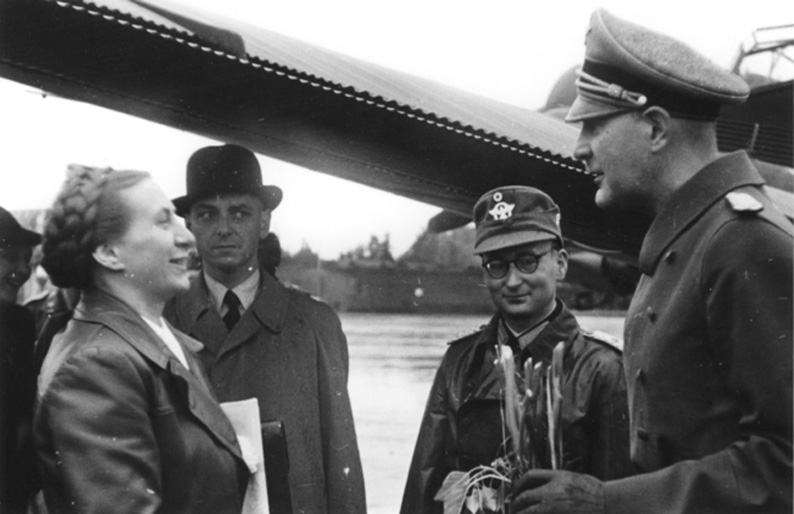
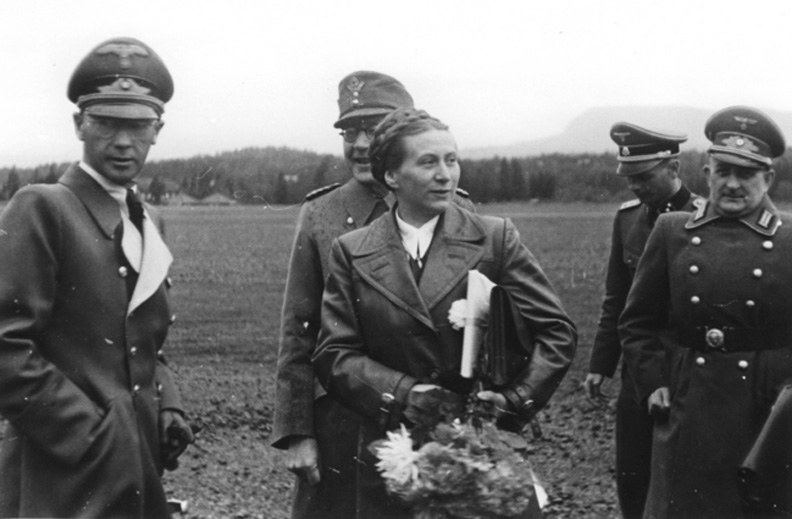
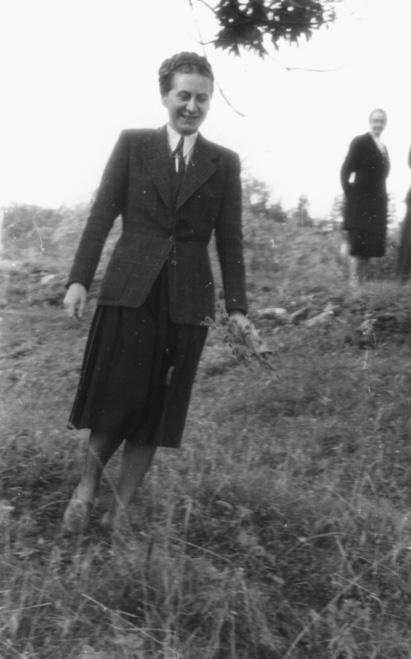
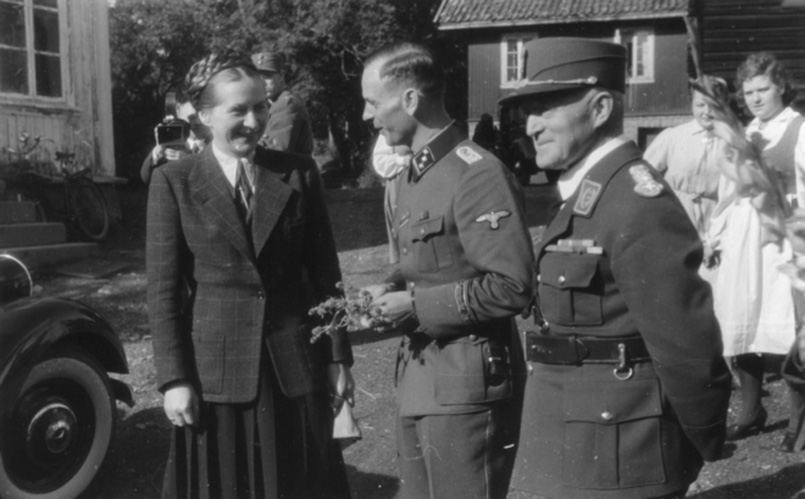
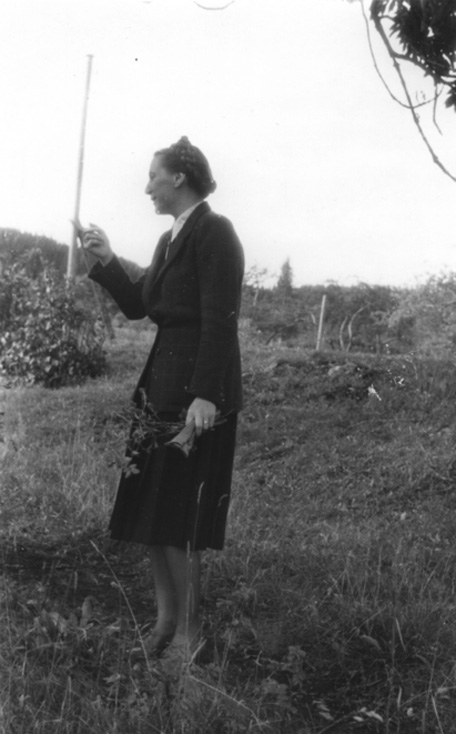
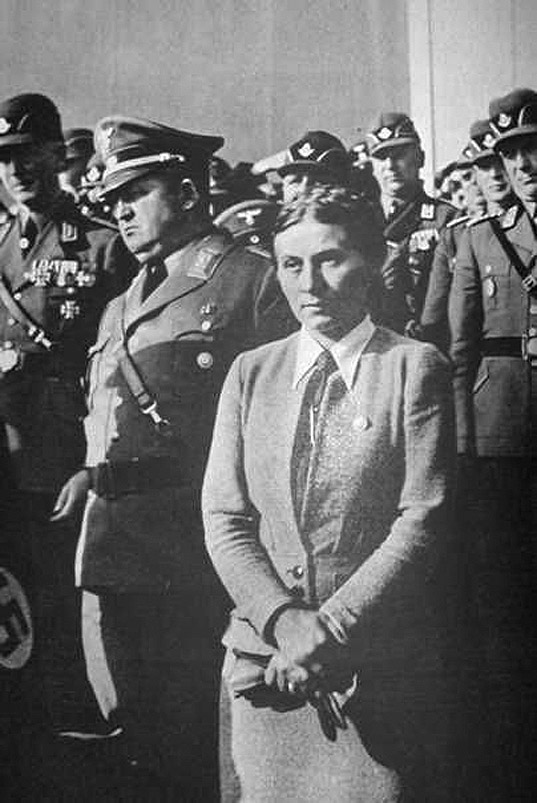
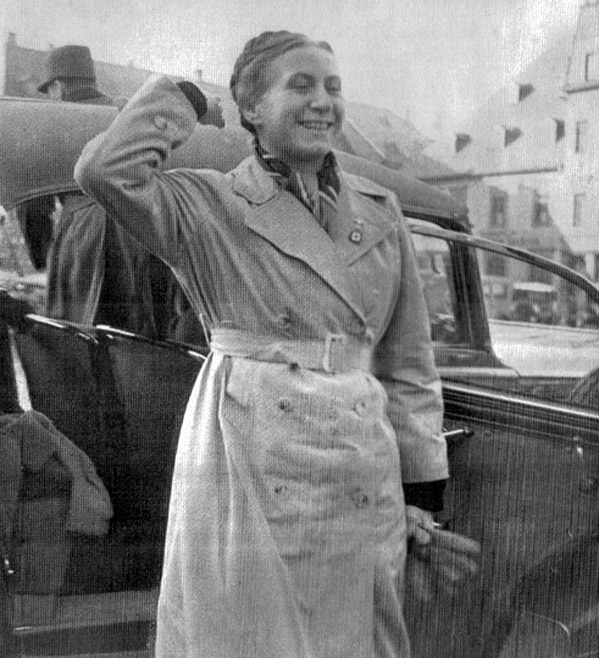
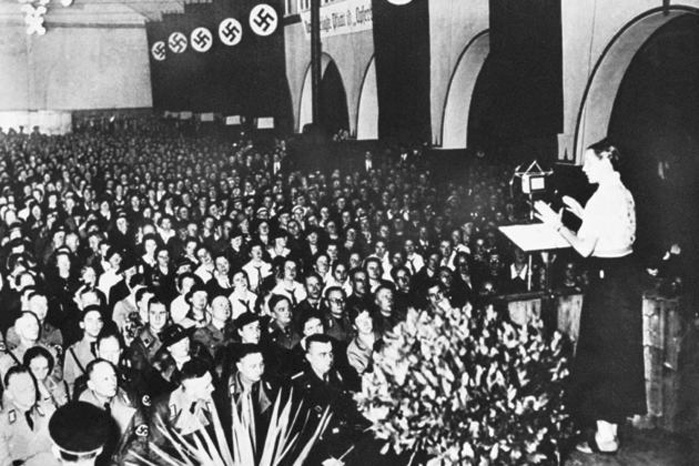
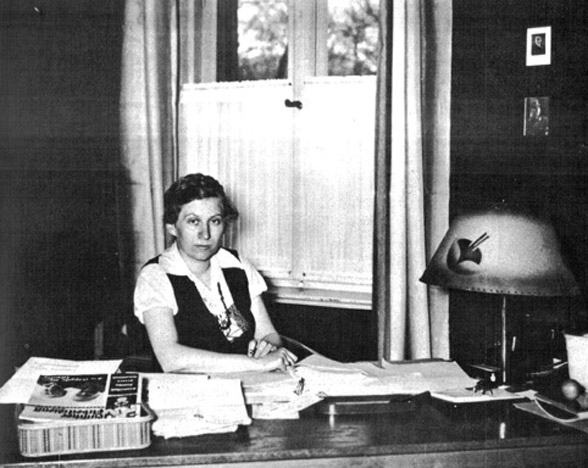

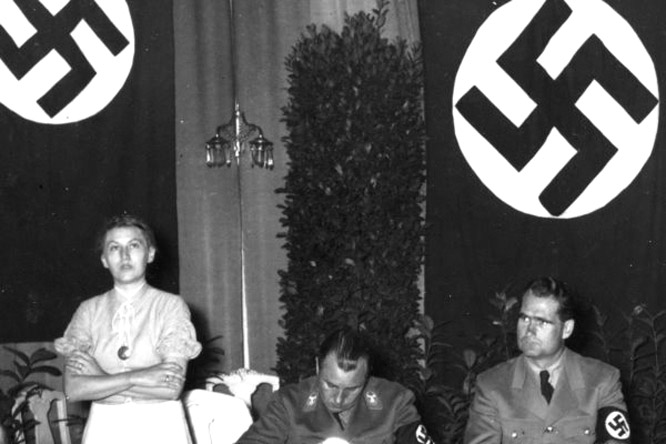
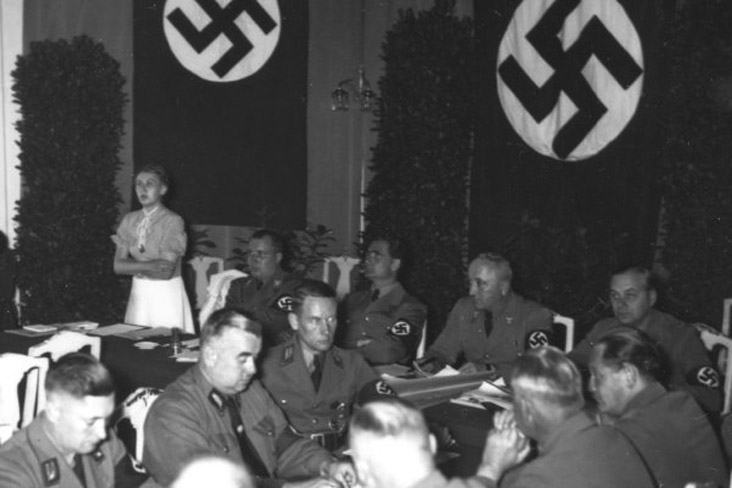
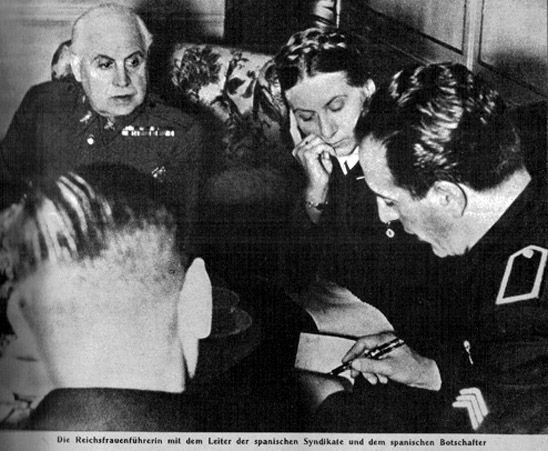
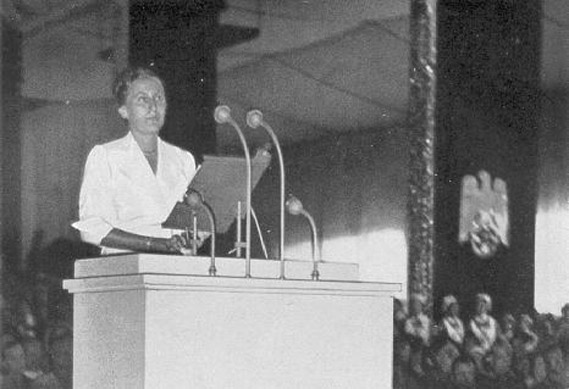
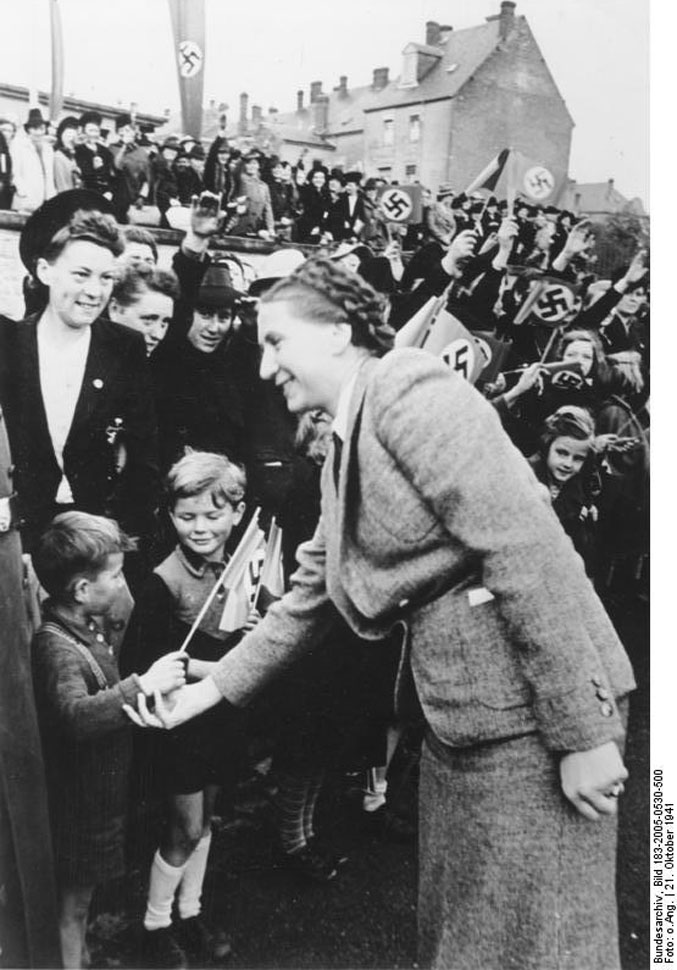
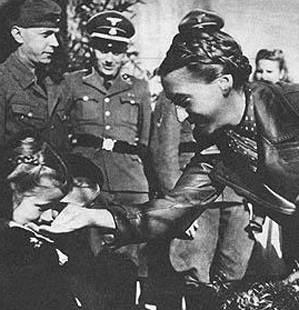
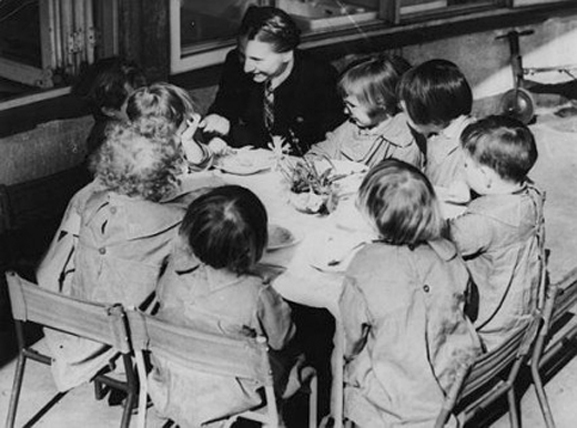
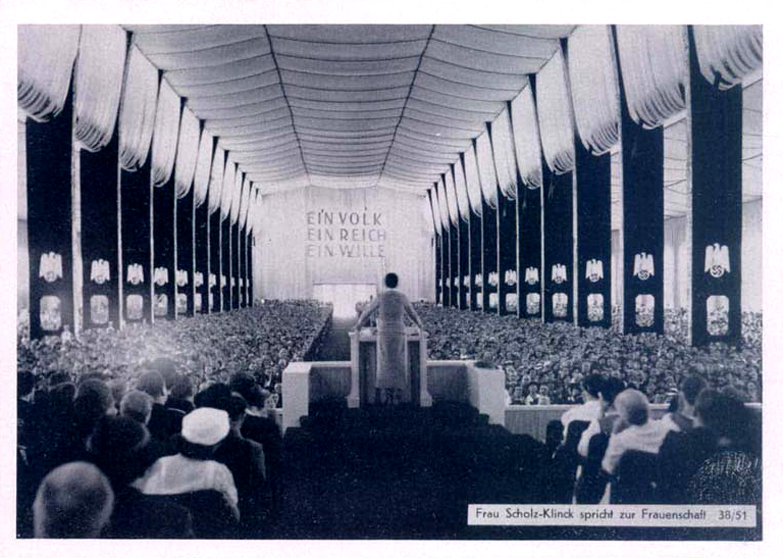
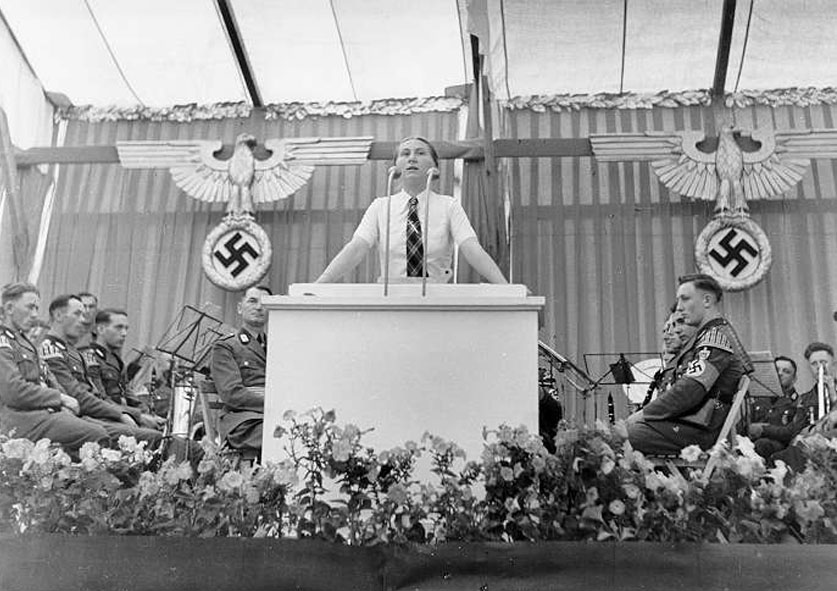
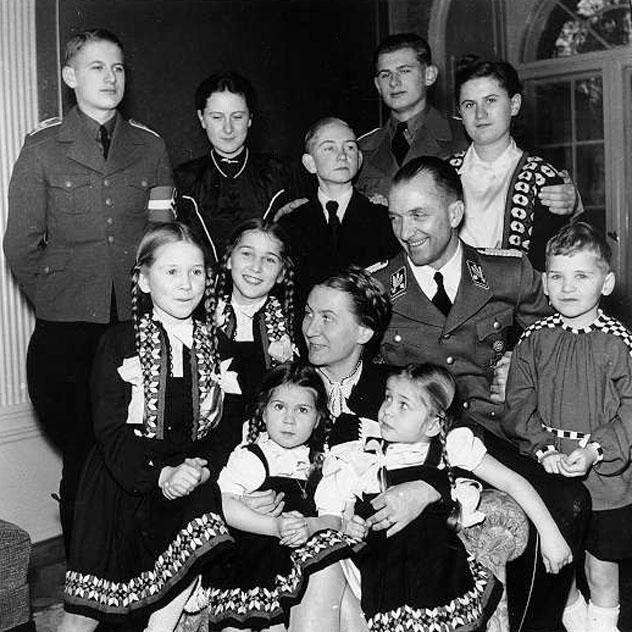
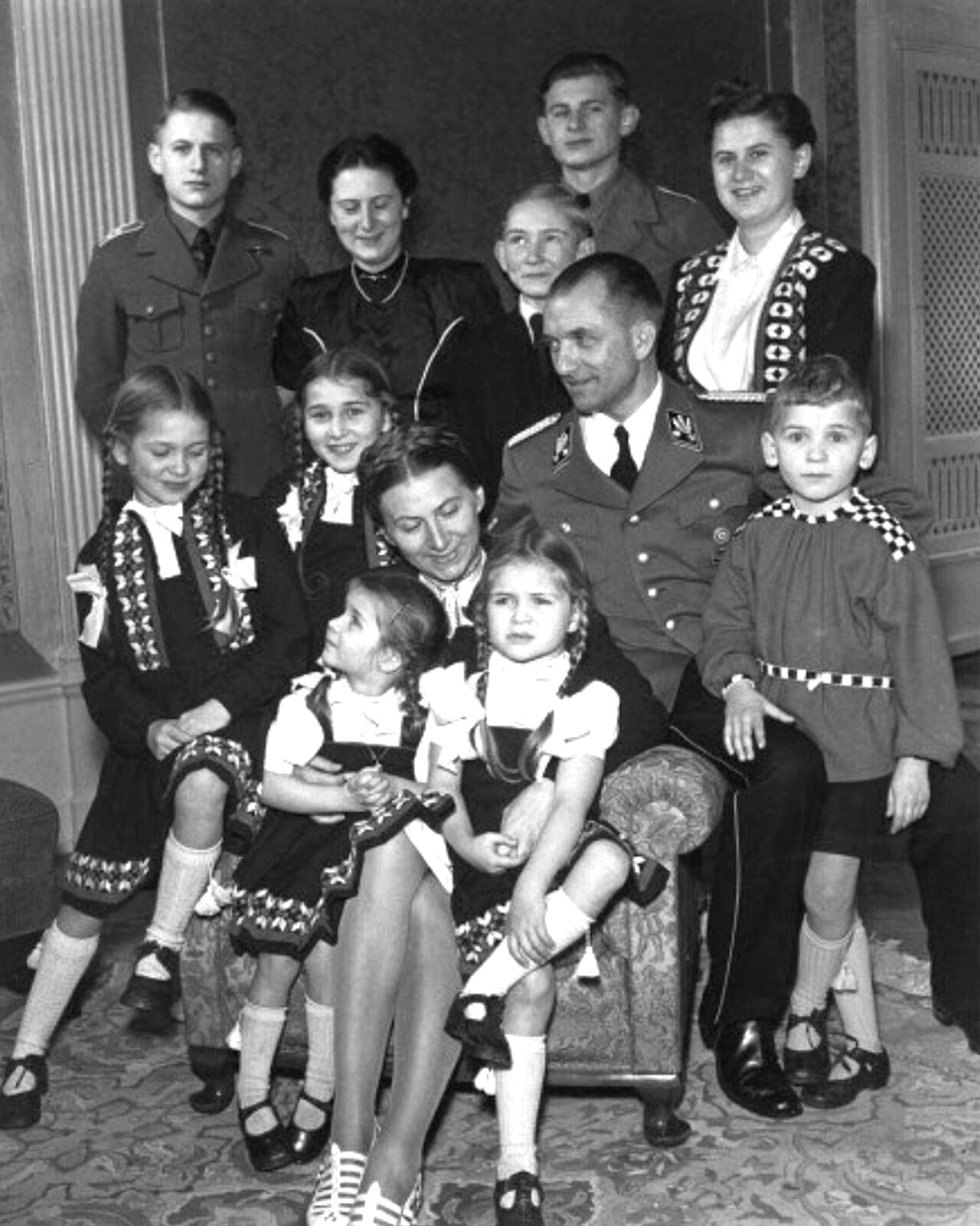
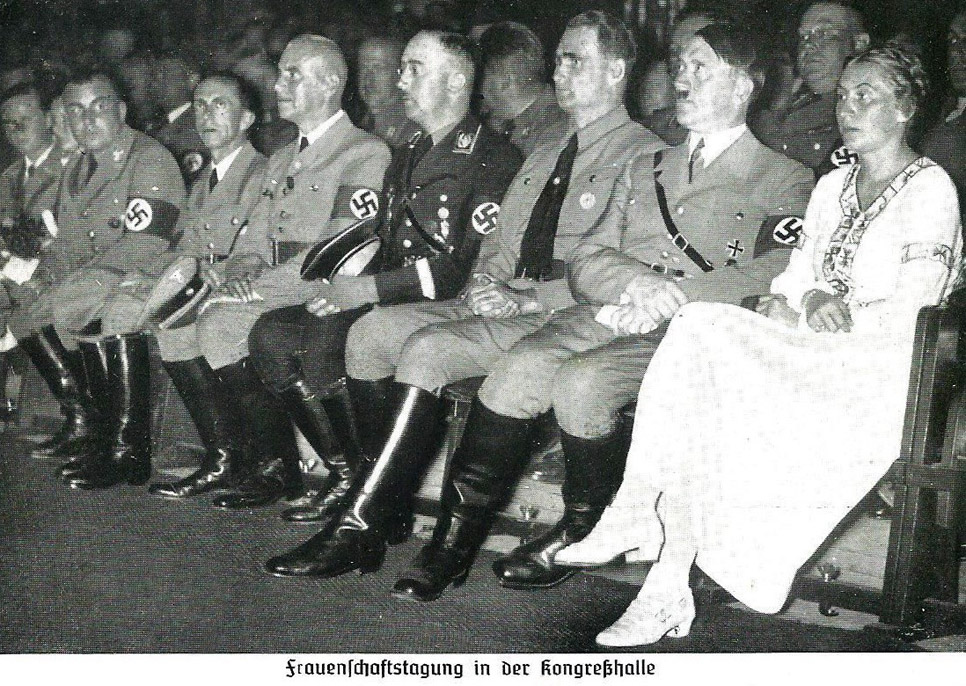
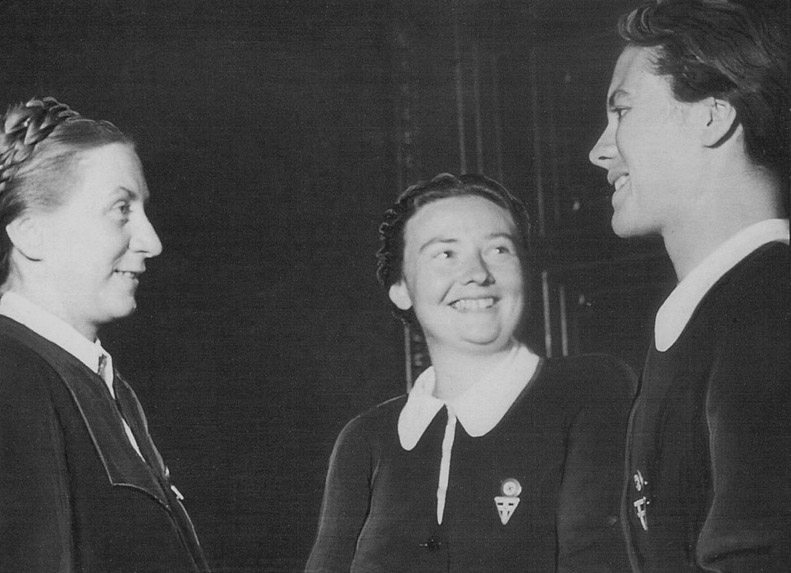
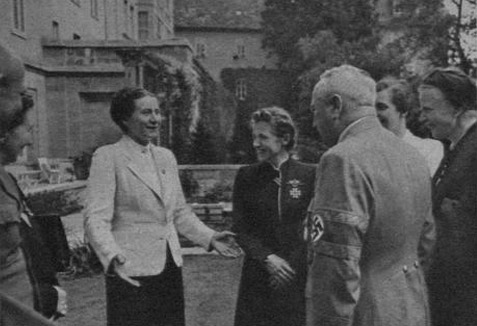
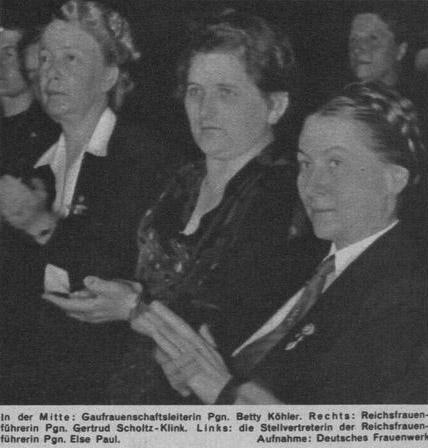
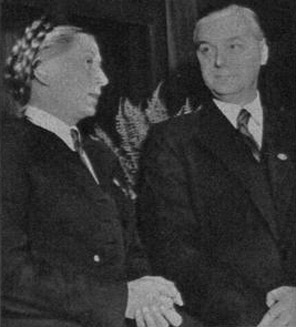
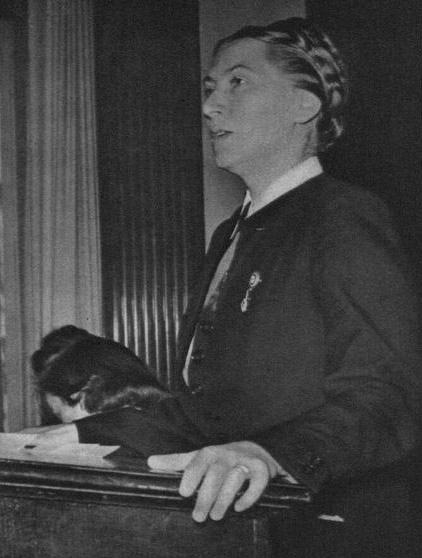
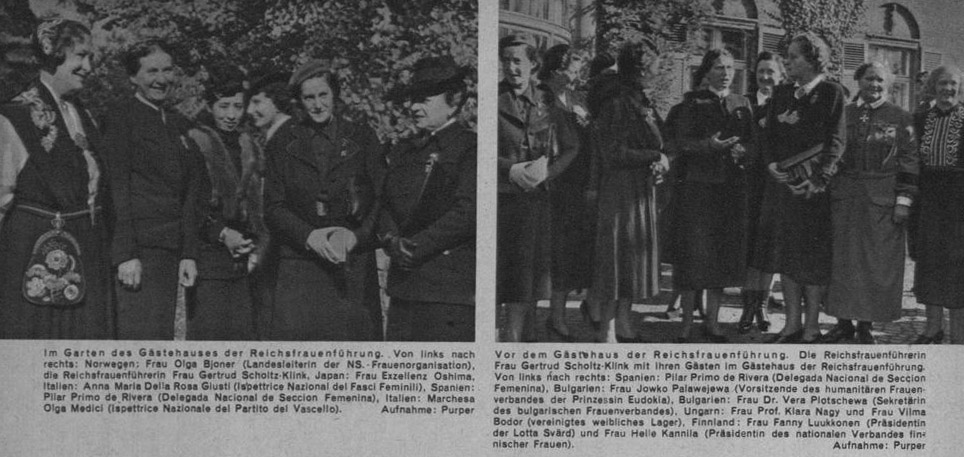
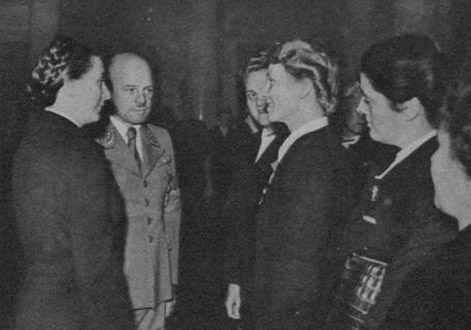
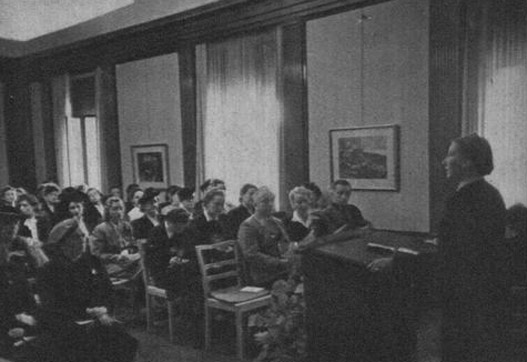
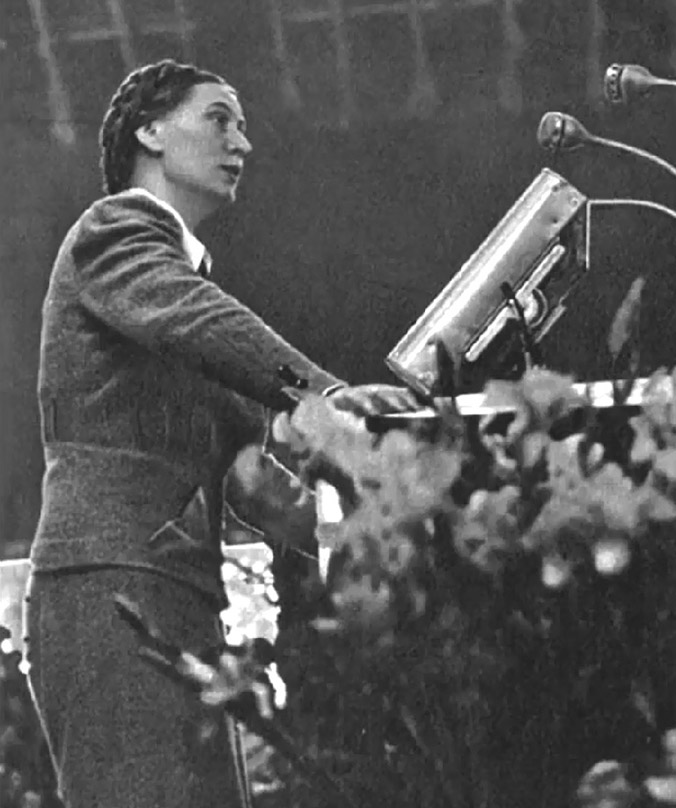
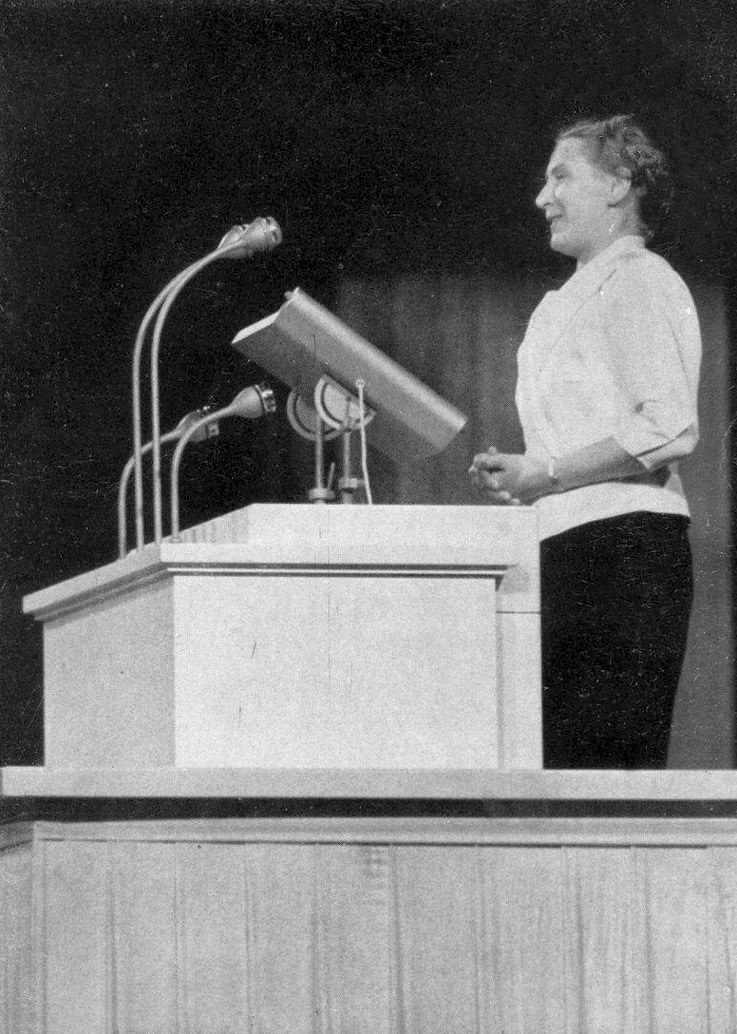
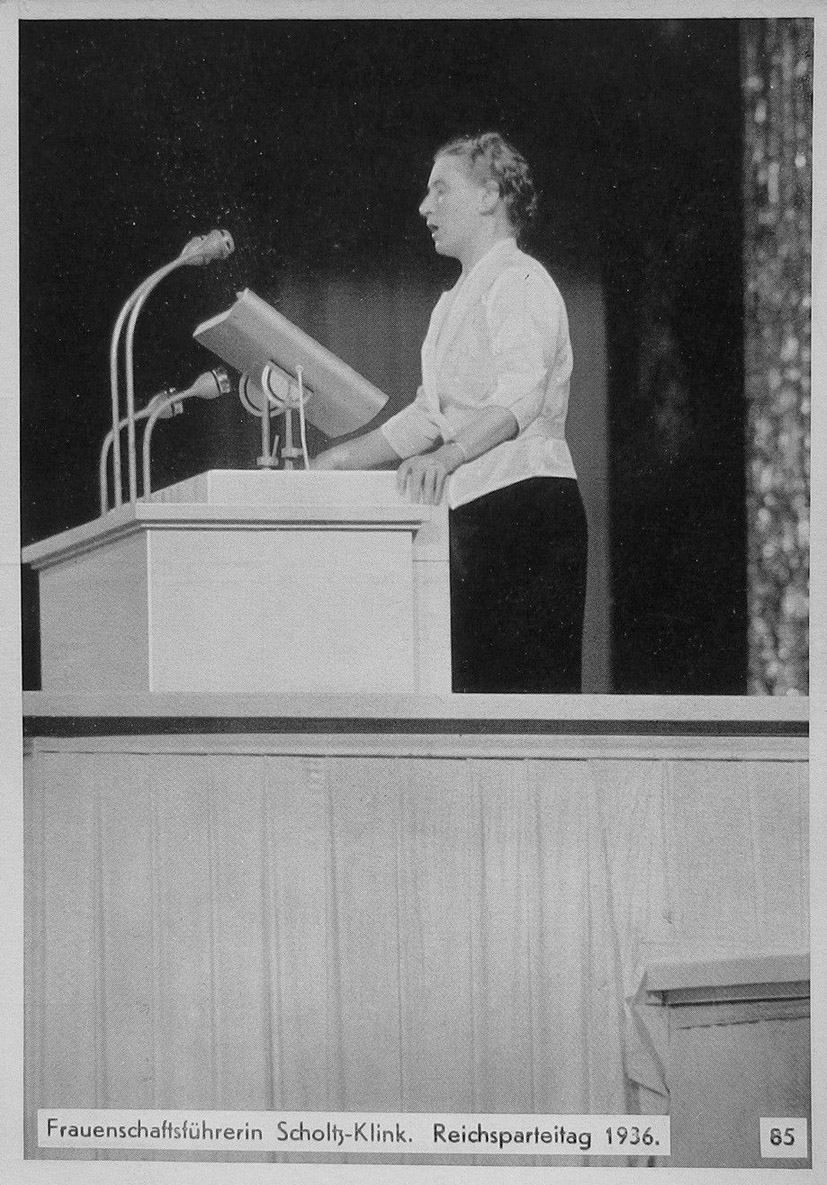
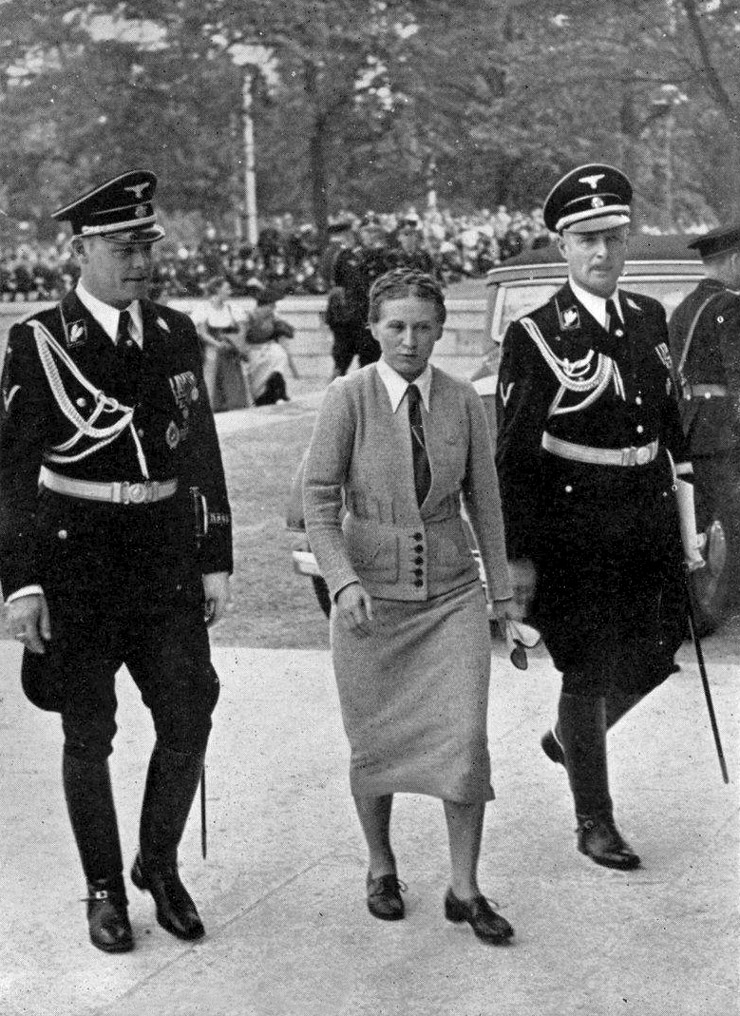
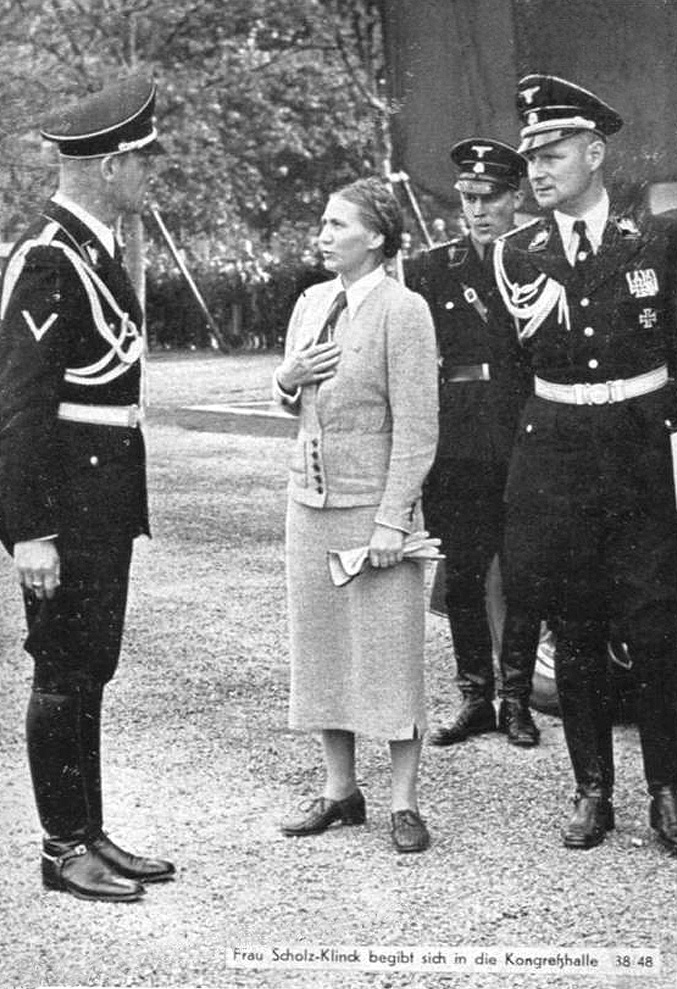
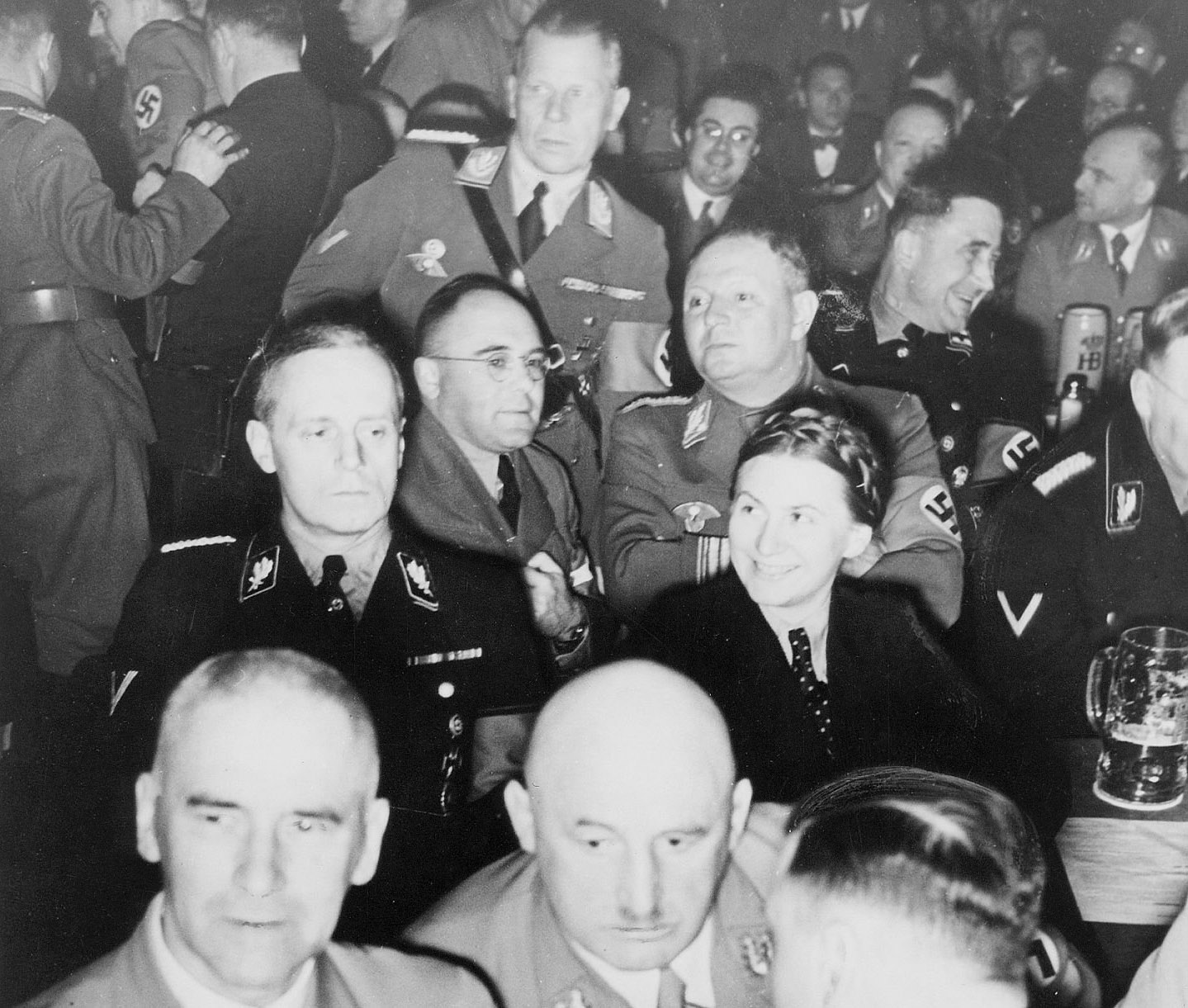
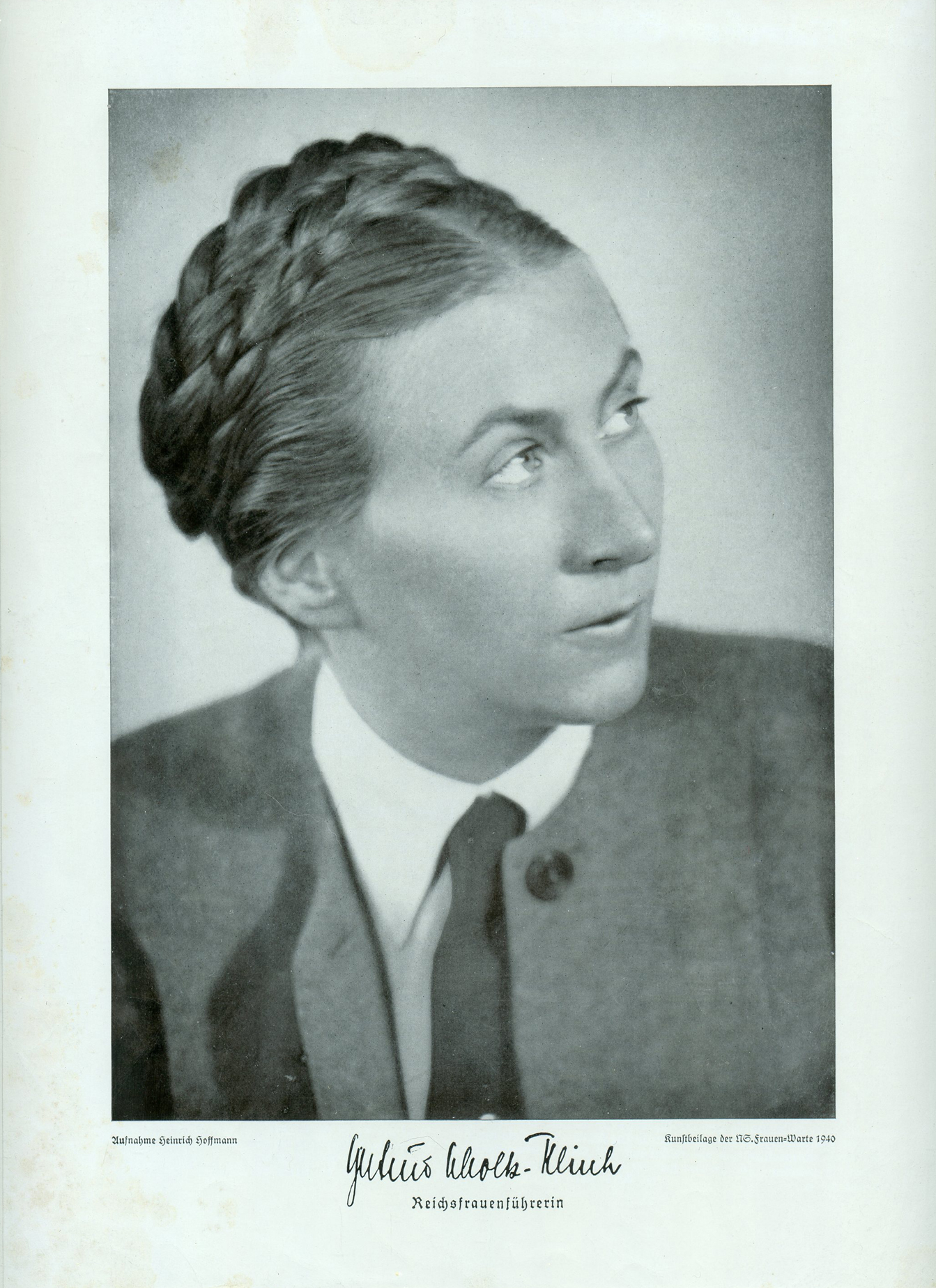
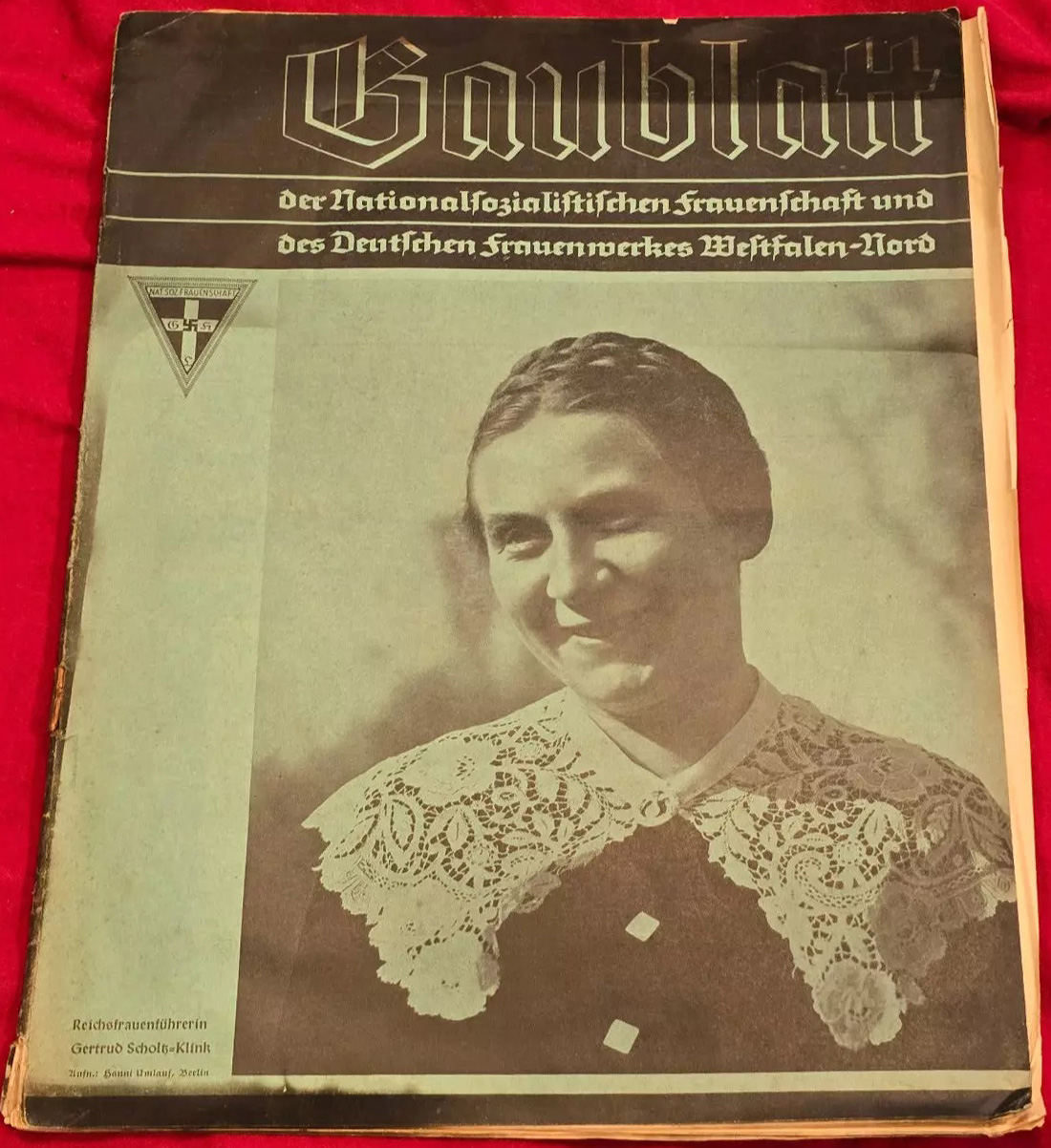
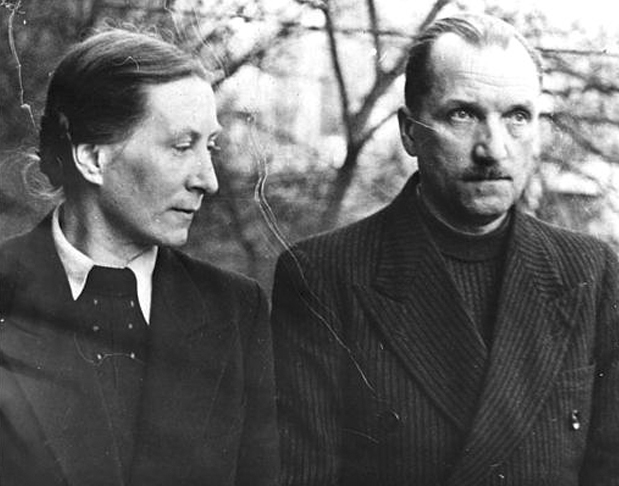
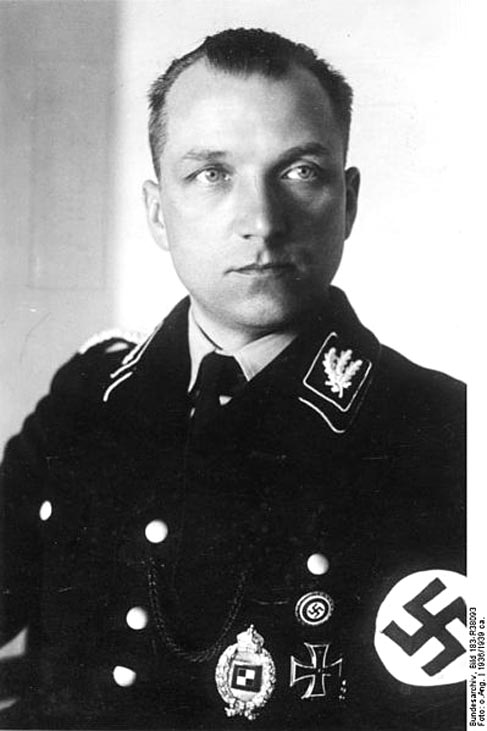
It asks, however, for more than in the past: that each should first completely accomplish the tasks that are appropriate to his or her nature.'
-Deutsch sein — heißt stark sein. Rede der Reichsfrauenführerin Gertrud Scholtz-Klink zum Jahresbeginn, from the magazine 'N.S. Frauen-Warte' 4 (1936), 501-502.
